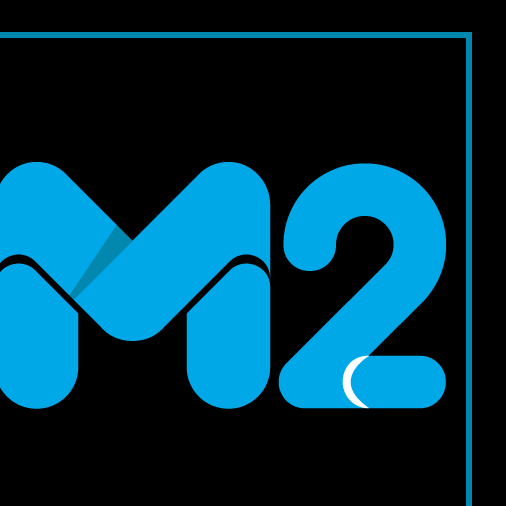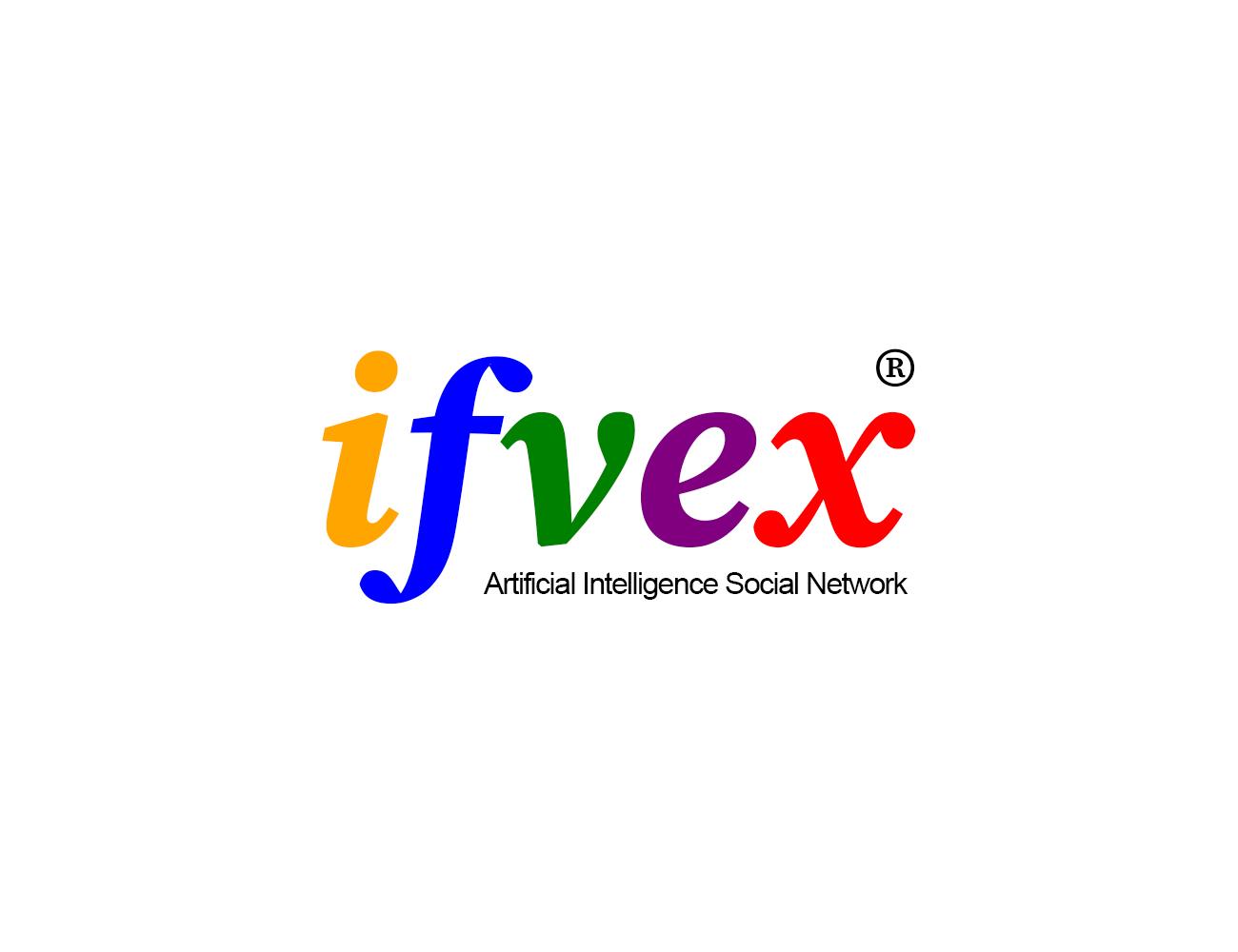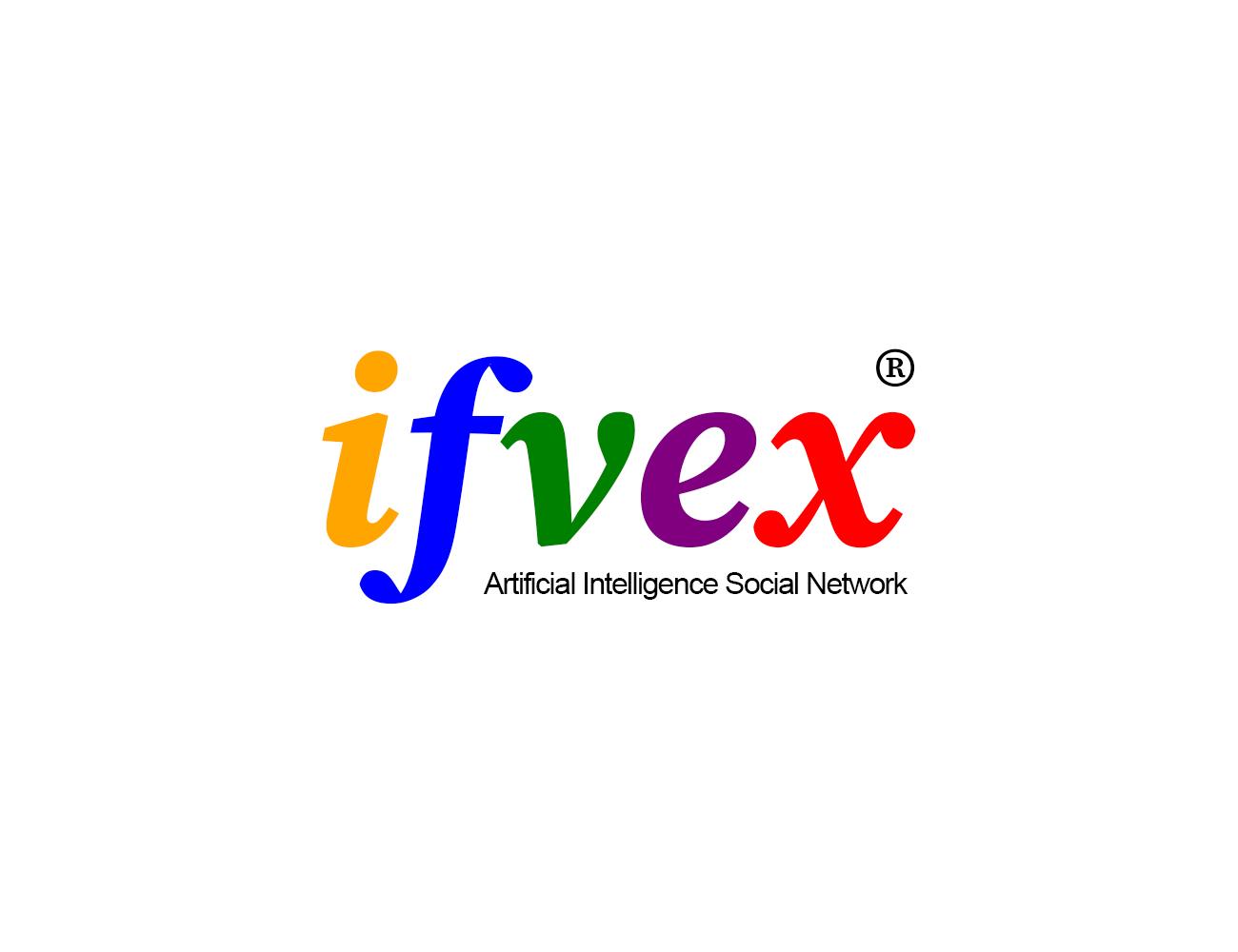Πρόσφατες ενημερώσεις
-
Ophthalmic Surgical Devices Market CAGR Forecast Through 2033
Ophthalmic Surgical Devices Market: Trends, Growth & Future Outlook 2025–2033
Introduction
The Ophthalmic Surgical Devices Market has become one of the fastest-evolving segments in healthcare technology, driven by a growing global burden of eye-related disorders and rapid advancements in surgical innovations. With over a decade of experience in healthcare industry blog writing, I have closely tracked how this sector has matured, particularly as aging populations and lifestyle-related conditions contribute to a surge in eye surgeries worldwide.
Request Sample PDF here:
https://m2squareconsultancy.com/request-sample/ophthalmic-surgical-devices-market
According to recent projections, the Ophthalmic Surgical Devices Market size is estimated at USD 8.8 billion in 2025 and is anticipated to reach USD 12.8 billion by 2033, growing at a CAGR of 4.9%. This consistent growth highlights the increasing demand for advanced technologies addressing glaucoma, cataracts, diabetic retinopathy, and vitreoretinal diseases.
Experience & Industry Perspective
Having written extensively on medical devices markets for the past ten years, I have observed how ophthalmology has transformed with minimally invasive procedures, advanced imaging systems, and the integration of robotics and AI. My continuous engagement with healthcare professionals, technology providers, and market research insights allows me to provide a nuanced view of this market.
Eye health is no longer considered a specialty issue; it is now part of mainstream healthcare discussions due to its connection with aging, diabetes, and overall quality of life. From cataract surgeries becoming the most performed procedure globally to the rising popularity of femtosecond lasers and intraocular lenses (IOLs), the market is evolving to meet both clinical and patient-centric demands.
Expertise: Key Growth Drivers of the Ophthalmic Surgical Devices Market
Rising Prevalence of Eye Disorders
Glaucoma, cataracts, age-related macular degeneration (AMD), and diabetic retinopathy are growing at alarming rates.
According to WHO, over 2 billion people worldwide suffer from vision impairment, and nearly half of these cases could have been prevented or treated.
Technological Advancements
Adoption of robot-assisted surgeries, 3D visualization, and AI-powered diagnostic tools.
High-performance femtosecond lasers for precision cataract surgeries.
Development of premium IOLs offering multifocal and toric solutions.
Aging Global Population
By 2030, one in six people globally will be over 60 years old, significantly increasing demand for surgical interventions.
Diabetes Epidemic
Rising diabetes cases fuel diabetic retinopathy-related surgeries and demand for retinal devices.
Access to Advanced Healthcare
Expansion of healthcare infrastructure in emerging economies such as India, China, and Brazil drives higher adoption rates of ophthalmic surgical devices.
Authoritativeness: Market Segmentation & Opportunities
By Device Type
Cataract Surgery Devices – Leading segment due to high surgical volumes worldwide.
Glaucoma Surgery Devices – Expected to grow significantly with increasing early diagnosis rates.
Vitreo-retinal Surgery Devices – Rising demand with diabetic retinopathy prevalence.
Refractive Surgery Devices – Gaining traction among younger populations seeking vision correction.
By End User
Hospitals & Clinics – Largest share due to surgical infrastructure and patient inflows.
Ambulatory Surgical Centers (ASCs) – Rapidly growing as cost-effective alternatives.
Regional Outlook
North America: Dominant market due to advanced technology adoption and established healthcare systems.
Asia-Pacific: Fastest growth rate, driven by high cataract prevalence, expanding medical tourism, and government health programs.
Europe: Strong focus on innovation and patient safety standards.
Trustworthiness: Future Trends & Forecast (2025–2033)
The Ophthalmic Surgical Devices Market outlook between 2025 and 2033 underscores promising opportunities:
Digital Integration: AI, big data, and teleophthalmology enhancing pre-surgical planning.
Minimally Invasive Techniques: Smaller incisions, faster recovery, and patient satisfaction.
Portable & Affordable Devices: Increasing accessibility in rural and underserved regions.
Sustainability in Surgical Devices: Demand for eco-friendly and reusable devices.
Collaborations & M&A: Industry consolidation and partnerships with technology firms will accelerate innovation.
Frequently Asked Questions (FAQ) on the Ophthalmic Surgical Devices Market
What is the Ophthalmic Surgical Devices Market?
How big is the Ophthalmic Surgical Devices Market in 2025?
What is the growth forecast for the Ophthalmic Surgical Devices Market by 2033?
What factors are driving the growth of the Ophthalmic Surgical Devices Market?
Which regions dominate the Ophthalmic Surgical Devices Market?
What are the major device segments in the Ophthalmic Surgical Devices Market?
Who are the key end users of ophthalmic surgical devices?
What are the future trends in the Ophthalmic Surgical Devices Market?
Conclusion
The Ophthalmic Surgical Devices Market is positioned for strong, steady growth through 2033, with its size projected to reach USD 12.8 billion. Rising cases of glaucoma, cataracts, and diabetic retinopathy combined with advanced surgical technologies are fueling the demand for innovative solutions.
Explore More Related Report :
https://m2squareconsultancy.com/reports/healthcare-in-metaverse-market
https://m2squareconsultancy.com/reports/single-use-bioprocessing-market
https://m2squareconsultancy.com/reports/precision-medicine-market
https://m2squareconsultancy.com/reports/global-biosimilars-market
https://m2squareconsultancy.com/reports/patient-handling-equipment-market
Contact Us
Email: sales@m2squareconsultancy.com
Phone (IN): +91 80978 74280
Phone (US): +1 929 447 0100
Ophthalmic Surgical Devices Market CAGR Forecast Through 2033 Ophthalmic Surgical Devices Market: Trends, Growth & Future Outlook 2025–2033 Introduction The Ophthalmic Surgical Devices Market has become one of the fastest-evolving segments in healthcare technology, driven by a growing global burden of eye-related disorders and rapid advancements in surgical innovations. With over a decade of experience in healthcare industry blog writing, I have closely tracked how this sector has matured, particularly as aging populations and lifestyle-related conditions contribute to a surge in eye surgeries worldwide. Request Sample PDF here: https://m2squareconsultancy.com/request-sample/ophthalmic-surgical-devices-market According to recent projections, the Ophthalmic Surgical Devices Market size is estimated at USD 8.8 billion in 2025 and is anticipated to reach USD 12.8 billion by 2033, growing at a CAGR of 4.9%. This consistent growth highlights the increasing demand for advanced technologies addressing glaucoma, cataracts, diabetic retinopathy, and vitreoretinal diseases. Experience & Industry Perspective Having written extensively on medical devices markets for the past ten years, I have observed how ophthalmology has transformed with minimally invasive procedures, advanced imaging systems, and the integration of robotics and AI. My continuous engagement with healthcare professionals, technology providers, and market research insights allows me to provide a nuanced view of this market. Eye health is no longer considered a specialty issue; it is now part of mainstream healthcare discussions due to its connection with aging, diabetes, and overall quality of life. From cataract surgeries becoming the most performed procedure globally to the rising popularity of femtosecond lasers and intraocular lenses (IOLs), the market is evolving to meet both clinical and patient-centric demands. Expertise: Key Growth Drivers of the Ophthalmic Surgical Devices Market Rising Prevalence of Eye Disorders Glaucoma, cataracts, age-related macular degeneration (AMD), and diabetic retinopathy are growing at alarming rates. According to WHO, over 2 billion people worldwide suffer from vision impairment, and nearly half of these cases could have been prevented or treated. Technological Advancements Adoption of robot-assisted surgeries, 3D visualization, and AI-powered diagnostic tools. High-performance femtosecond lasers for precision cataract surgeries. Development of premium IOLs offering multifocal and toric solutions. Aging Global Population By 2030, one in six people globally will be over 60 years old, significantly increasing demand for surgical interventions. Diabetes Epidemic Rising diabetes cases fuel diabetic retinopathy-related surgeries and demand for retinal devices. Access to Advanced Healthcare Expansion of healthcare infrastructure in emerging economies such as India, China, and Brazil drives higher adoption rates of ophthalmic surgical devices. Authoritativeness: Market Segmentation & Opportunities By Device Type Cataract Surgery Devices – Leading segment due to high surgical volumes worldwide. Glaucoma Surgery Devices – Expected to grow significantly with increasing early diagnosis rates. Vitreo-retinal Surgery Devices – Rising demand with diabetic retinopathy prevalence. Refractive Surgery Devices – Gaining traction among younger populations seeking vision correction. By End User Hospitals & Clinics – Largest share due to surgical infrastructure and patient inflows. Ambulatory Surgical Centers (ASCs) – Rapidly growing as cost-effective alternatives. Regional Outlook North America: Dominant market due to advanced technology adoption and established healthcare systems. Asia-Pacific: Fastest growth rate, driven by high cataract prevalence, expanding medical tourism, and government health programs. Europe: Strong focus on innovation and patient safety standards. Trustworthiness: Future Trends & Forecast (2025–2033) The Ophthalmic Surgical Devices Market outlook between 2025 and 2033 underscores promising opportunities: Digital Integration: AI, big data, and teleophthalmology enhancing pre-surgical planning. Minimally Invasive Techniques: Smaller incisions, faster recovery, and patient satisfaction. Portable & Affordable Devices: Increasing accessibility in rural and underserved regions. Sustainability in Surgical Devices: Demand for eco-friendly and reusable devices. Collaborations & M&A: Industry consolidation and partnerships with technology firms will accelerate innovation. Frequently Asked Questions (FAQ) on the Ophthalmic Surgical Devices Market What is the Ophthalmic Surgical Devices Market? How big is the Ophthalmic Surgical Devices Market in 2025? What is the growth forecast for the Ophthalmic Surgical Devices Market by 2033? What factors are driving the growth of the Ophthalmic Surgical Devices Market? Which regions dominate the Ophthalmic Surgical Devices Market? What are the major device segments in the Ophthalmic Surgical Devices Market? Who are the key end users of ophthalmic surgical devices? What are the future trends in the Ophthalmic Surgical Devices Market? Conclusion The Ophthalmic Surgical Devices Market is positioned for strong, steady growth through 2033, with its size projected to reach USD 12.8 billion. Rising cases of glaucoma, cataracts, and diabetic retinopathy combined with advanced surgical technologies are fueling the demand for innovative solutions. Explore More Related Report : https://m2squareconsultancy.com/reports/healthcare-in-metaverse-market https://m2squareconsultancy.com/reports/single-use-bioprocessing-market https://m2squareconsultancy.com/reports/precision-medicine-market https://m2squareconsultancy.com/reports/global-biosimilars-market https://m2squareconsultancy.com/reports/patient-handling-equipment-market Contact Us Email: sales@m2squareconsultancy.com Phone (IN): +91 80978 74280 Phone (US): +1 929 447 01000 Σχόλια 0 Μοιράστηκε 2χλμ. Views 0 ΠροεπισκόπησηΠαρακαλούμε συνδέσου στην Κοινότητά μας για να δηλώσεις τι σου αρέσει, να σχολιάσεις και να μοιραστείς με τους φίλους σου! -
The Rise of Robotic Instruments in Minimally Invasive Surgical Market
Minimally Invasive Surgical Instruments Market: Transforming Modern Healthcare
The global Minimally Invasive Surgical Instruments Market (MIS) was valued at USD 29.6 billion in 2025 and is projected to reach USD 52.2 billion by 2033, expanding at a CAGR of 7.5% during the forecast period. This robust growth underscores the increasing adoption of minimally invasive surgery worldwide, driven by advancements in technology and rising demand for safer surgical procedures.
Request Sample PDF here: https://m2squareconsultancy.com/reports/minimally-invasive-surgical-instruments-market
Minimally invasive surgery has revolutionized modern healthcare by offering patients safer, faster, and more cost-effective alternatives to traditional open surgery. Unlike conventional surgical methods that require large incisions, MIS techniques use small incisions aided by specialized surgical instruments and imaging technologies. This approach significantly reduces trauma, scarring, hospital stays, and recovery times, delivering better overall patient outcomes.
Minimally Invasive Surgical Instruments Market Scope
Report Attributes
Description
Market Size in 2025
USD 29.6 Billion
Market Forecast in 2033
USD 52.2 Billion
CAGR % 2025-2033
7.5%
Base Year
2024
Historic Data
2020-2024
Forecast Period
2025-2033
Report USP
Production, Consumption, company share, company heatmap, company production Capacity, growth factors, and more
Factors Driving Market Growth
The expansion of the minimally invasive surgical instruments market is fueled by several key factors:
Technological Advancements: Continuous improvements in imaging technologies, robotic-assisted surgery, and high-precision surgical tools have enhanced the accuracy and safety of MIS procedures. These innovations allow surgeons to operate with greater control and visibility, even in complex surgeries.
Rising Prevalence of Chronic Diseases: The increasing global burden of chronic conditions such as cardiovascular disease, cancer, and obesity has prompted the demand for minimally invasive surgeries that reduce complications and improve recovery.
Patient Preference: Patients increasingly prefer minimally invasive procedures due to benefits like reduced pain, faster recovery, and fewer complications, leading to higher demand in both developed and emerging markets.
Cost-Effectiveness: Minimally invasive surgeries generally result in shorter hospital stays and lower postoperative care costs, making them attractive to healthcare providers and payers aiming to manage healthcare expenditures.
Global Minimally Invasive Surgical Instruments Market is dominated by a few large companies
Medtronic Plc
Siemens Healthineer AG
Ethicon, Inc. (Johnson & Johnson)
GE Healthcare
Abbott Laboratories
Intuitive Surgical, Inc.
Nuvasive, Inc.
Zimmer Biomet
Stryker Corporation
Boston Scientific Corporation
Braun Melsungen AG
Market Segmentation
The MIS instruments market includes a wide range of products tailored to different surgical specialties such as general surgery, gynecology, orthopedics, and cardiovascular surgery. Key instrument categories include:
Endoscopic instruments
Laparoscopic tools
Catheters and guidewires
Electrosurgical devices
Robotic surgical instruments
Among these, laparoscopic instruments hold a significant share due to their established use in abdominal and gynecological surgeries, while robotic surgical systems are growing rapidly with improving accessibility and adoption.
Regional Insights
North America dominates the MIS instruments market, benefiting from advanced healthcare infrastructure, high adoption of cutting-edge technologies, and strong government support for innovative treatments. Europe and the Asia-Pacific region are also witnessing rapid growth, driven by increasing healthcare investments, rising surgical volumes, and expanding patient awareness about minimally invasive options.
Frequently Asked Questions (FAQ) about the Minimally Invasive Surgical Instruments Market
What are minimally invasive surgical instruments?
Why is the minimally invasive surgical instruments market growing rapidly?
Which types of surgeries commonly use minimally invasive instruments?
What are the benefits of minimally invasive surgery for patients?
How do robotic surgical instruments impact the MIS market?
Which regions are leading the minimally invasive surgical instruments market?
What future trends are expected in the MIS instruments market?
Future Outlook
As the minimally invasive surgical instruments market continues to evolve, factors like integration of artificial intelligence and machine learning with robotic surgery, improvements in augmented reality for surgical navigation, and development of next-generation materials for instruments will further enhance clinical outcomes. These trends position the MIS instruments market for sustained growth through 2033 and beyond.
In conclusion
The minimally invasive surgical instruments market represents a pivotal component of the future of healthcare. By enabling safer, more precise, and cost-effective surgeries, these instruments are transforming surgical practice globally and improving patient care standards significantly.
Browse More Related Similar Topics:
https://m2squareconsultancy.com/reports/global-ventilators-market
https://m2squareconsultancy.com/reports/pharmaceutical-supply-chain-management-market
https://m2squareconsultancy.com/reports/ophthalmic-surgical-devices-market
https://m2squareconsultancy.com/reports/pharmaceuticals-excipients-market
https://m2squareconsultancy.com/reports/in-vitro-diagnostics-market
Contact Us
Email: sales@m2squareconsultancy.com
Phone (IN): +91 80978 74280
Phone (US): +1 929 447 0100
The Rise of Robotic Instruments in Minimally Invasive Surgical Market Minimally Invasive Surgical Instruments Market: Transforming Modern Healthcare The global Minimally Invasive Surgical Instruments Market (MIS) was valued at USD 29.6 billion in 2025 and is projected to reach USD 52.2 billion by 2033, expanding at a CAGR of 7.5% during the forecast period. This robust growth underscores the increasing adoption of minimally invasive surgery worldwide, driven by advancements in technology and rising demand for safer surgical procedures. Request Sample PDF here: https://m2squareconsultancy.com/reports/minimally-invasive-surgical-instruments-market Minimally invasive surgery has revolutionized modern healthcare by offering patients safer, faster, and more cost-effective alternatives to traditional open surgery. Unlike conventional surgical methods that require large incisions, MIS techniques use small incisions aided by specialized surgical instruments and imaging technologies. This approach significantly reduces trauma, scarring, hospital stays, and recovery times, delivering better overall patient outcomes. Minimally Invasive Surgical Instruments Market Scope Report Attributes Description Market Size in 2025 USD 29.6 Billion Market Forecast in 2033 USD 52.2 Billion CAGR % 2025-2033 7.5% Base Year 2024 Historic Data 2020-2024 Forecast Period 2025-2033 Report USP Production, Consumption, company share, company heatmap, company production Capacity, growth factors, and more Factors Driving Market Growth The expansion of the minimally invasive surgical instruments market is fueled by several key factors: Technological Advancements: Continuous improvements in imaging technologies, robotic-assisted surgery, and high-precision surgical tools have enhanced the accuracy and safety of MIS procedures. These innovations allow surgeons to operate with greater control and visibility, even in complex surgeries. Rising Prevalence of Chronic Diseases: The increasing global burden of chronic conditions such as cardiovascular disease, cancer, and obesity has prompted the demand for minimally invasive surgeries that reduce complications and improve recovery. Patient Preference: Patients increasingly prefer minimally invasive procedures due to benefits like reduced pain, faster recovery, and fewer complications, leading to higher demand in both developed and emerging markets. Cost-Effectiveness: Minimally invasive surgeries generally result in shorter hospital stays and lower postoperative care costs, making them attractive to healthcare providers and payers aiming to manage healthcare expenditures. Global Minimally Invasive Surgical Instruments Market is dominated by a few large companies Medtronic Plc Siemens Healthineer AG Ethicon, Inc. (Johnson & Johnson) GE Healthcare Abbott Laboratories Intuitive Surgical, Inc. Nuvasive, Inc. Zimmer Biomet Stryker Corporation Boston Scientific Corporation Braun Melsungen AG Market Segmentation The MIS instruments market includes a wide range of products tailored to different surgical specialties such as general surgery, gynecology, orthopedics, and cardiovascular surgery. Key instrument categories include: Endoscopic instruments Laparoscopic tools Catheters and guidewires Electrosurgical devices Robotic surgical instruments Among these, laparoscopic instruments hold a significant share due to their established use in abdominal and gynecological surgeries, while robotic surgical systems are growing rapidly with improving accessibility and adoption. Regional Insights North America dominates the MIS instruments market, benefiting from advanced healthcare infrastructure, high adoption of cutting-edge technologies, and strong government support for innovative treatments. Europe and the Asia-Pacific region are also witnessing rapid growth, driven by increasing healthcare investments, rising surgical volumes, and expanding patient awareness about minimally invasive options. Frequently Asked Questions (FAQ) about the Minimally Invasive Surgical Instruments Market What are minimally invasive surgical instruments? Why is the minimally invasive surgical instruments market growing rapidly? Which types of surgeries commonly use minimally invasive instruments? What are the benefits of minimally invasive surgery for patients? How do robotic surgical instruments impact the MIS market? Which regions are leading the minimally invasive surgical instruments market? What future trends are expected in the MIS instruments market? Future Outlook As the minimally invasive surgical instruments market continues to evolve, factors like integration of artificial intelligence and machine learning with robotic surgery, improvements in augmented reality for surgical navigation, and development of next-generation materials for instruments will further enhance clinical outcomes. These trends position the MIS instruments market for sustained growth through 2033 and beyond. In conclusion The minimally invasive surgical instruments market represents a pivotal component of the future of healthcare. By enabling safer, more precise, and cost-effective surgeries, these instruments are transforming surgical practice globally and improving patient care standards significantly. Browse More Related Similar Topics: https://m2squareconsultancy.com/reports/global-ventilators-market https://m2squareconsultancy.com/reports/pharmaceutical-supply-chain-management-market https://m2squareconsultancy.com/reports/ophthalmic-surgical-devices-market https://m2squareconsultancy.com/reports/pharmaceuticals-excipients-market https://m2squareconsultancy.com/reports/in-vitro-diagnostics-market Contact Us Email: sales@m2squareconsultancy.com Phone (IN): +91 80978 74280 Phone (US): +1 929 447 0100 M2SQUARECONSULTANCY.COMMinimally Invasive Surgical Instruments Market Size Analysis, Growth Trends & Forecast to 2033Minimally Invasive Surgical Instruments Market OverviewThe global Minimally Invasive Surgical (MIS) Instruments Market was valued at USD 29.6 billio...0 Σχόλια 0 Μοιράστηκε 1χλμ. Views 0 Προεπισκόπηση
M2SQUARECONSULTANCY.COMMinimally Invasive Surgical Instruments Market Size Analysis, Growth Trends & Forecast to 2033Minimally Invasive Surgical Instruments Market OverviewThe global Minimally Invasive Surgical (MIS) Instruments Market was valued at USD 29.6 billio...0 Σχόλια 0 Μοιράστηκε 1χλμ. Views 0 Προεπισκόπηση -
How effective is Cell & Gene Therapy compared to traditional treatments?
Cell & Gene Therapy in 2025: A Game Changer for Global Healthcare
Cell and Gene Therapy (CGT) has rapidly evolved from a niche innovation into a mainstream healthcare solution, fundamentally transforming how we diagnose, treat, and manage rare and chronic diseases. By 2025, the adoption of cell and gene therapy has reached a pivotal stage, with an increasing number of approved therapies improving patient outcomes across oncology, neurology, immunology, ophthalmology, and genetic disorders. Unlike traditional treatments that only manage symptoms, cell and gene therapy in 2025 aims to address the root cause of disease by repairing defective genes or reprogramming patient-derived cells. This curative potential is revolutionizing healthcare delivery and reshaping healthcare economics on a global scale.
Cell & Gene Therapy in 2025: Mainstream Adoption
The year 2025 marks a tipping point where advances in cell and gene therapy are no longer limited to clinical trials but are being integrated into standard care pathways. Pharmaceutical giants and biotech innovators are scaling up manufacturing capabilities to meet rising demand. Automated cell processing platforms, advanced viral vector production systems, and digital biomanufacturing are enabling cost efficiency and wider access.
Governments and regulators are also adapting to this paradigm shift. Agencies such as the U.S. FDA and the European Medicines Agency (EMA) are introducing streamlined cell and gene therapy regulatory pathways, balancing rapid approvals with stringent safety standards. Meanwhile, innovative payment models, including value-based pricing, are aligning treatment costs with patient outcomes, ensuring affordability and accessibility.
Trends and Challenges in CGT Manufacturing
The rise of cell & gene therapy in 2025 is driving major shifts in manufacturing, personalization, and digital integration.
Personalization & Precision Medicine: Genomic sequencing and biomarker-driven diagnostics are guiding therapy selection, ensuring better clinical results.
Decentralized Manufacturing: Point-of-care production models allow therapies to be manufactured closer to patients, reducing turnaround times and costs.
Artificial Intelligence Integration: AI and machine learning are optimizing trial design, patient matching, and supply chain logistics.
Outcome-Based Reimbursement: Healthcare systems are shifting toward reimbursement models that link payment directly to therapeutic success.
However, CGT manufacturing faces hurdles such as scalability, quality control, and supply chain complexity. These CGT manufacturing challenges are being addressed through global collaborations between Contract Development and Manufacturing Organizations (CDMOs), biotech start-ups, and pharma leaders.
Expanding Ecosystem and Global Collaboration
The cell and gene therapy ecosystem in 2025 is expanding at an unprecedented pace. Established companies like Novartis, Gilead, and Bluebird Bio are being joined by agile start-ups focused on next-generation therapies such as allogeneic (off-the-shelf) cell therapies, novel vector platforms, and non-viral gene editing technologies.
Countries including the U.S., U.K., China, and Singapore are fostering biotech innovation hubs that attract venture capital and government support. These hubs encourage academic spin-offs and start-up incubation, fueling continuous innovation. Importantly, partnerships between new entrants and established pharma or CDMOs are reducing commercialization timelines and expanding global reach.
Expanding Indications: From Oncology to Rare Diseases
In 2025, cell and gene therapy treatment innovations have broadened far beyond oncology.
Hematology: Therapies for sickle cell disease, beta-thalassemia, and hemophilia are demonstrating high success rates.
Oncology: CAR-T and TCR therapies are transforming the treatment of blood cancers and advancing into solid tumor applications such as glioblastoma and pancreatic cancer.
Neurology: Breakthrough therapies are addressing spinal muscular atrophy (SMA), Duchenne muscular dystrophy (DMD), and Huntington’s disease.
Ophthalmology: Gene therapies are improving vision for patients with inherited retinal diseases like retinitis pigmentosa.
Cardiovascular & Metabolic Disorders: Therapies for familial hypercholesterolemia and lysosomal storage diseases are showing promising results.
Regulatory Pathways and Cost Considerations
The global CGT pipeline in 2025 includes over 2,000 therapies under development, with nearly half targeting cancer. Leading companies such as Novartis, Bristol Myers Squibb, Vertex, and CRISPR Therapeutics are advancing next-generation CAR-T, gene-editing, and base-editing platforms.
Regulators worldwide are creating adaptive approval frameworks for CGTs, particularly in rare disease indications, where unmet medical needs are urgent. While cost remains a challenge some therapies exceed USD 1 million per patient value-based pricing models and collaborative payer–provider approaches are making them more accessible.
Explore More Top Related Topic URL:
https://m2squareconsultancy.com/reports/mrna-therapeutics-market
https://m2squareconsultancy.com/reports/ophthalmic-equipment-market
https://m2squareconsultancy.com/reports/ophthalmic-surgical-devices-market
Conclusion:
The Future of Cell & Gene Therapy
By 2025, cell and gene therapy has firmly transitioned from experimental innovation to mainstream adoption, redefining the future of medicine. With its ability to cure rather than manage diseases, CGT is setting new standards in healthcare, expanding across multiple therapeutic areas, and creating new economic models for sustainable access.
How effective is Cell & Gene Therapy compared to traditional treatments? Cell & Gene Therapy in 2025: A Game Changer for Global Healthcare Cell and Gene Therapy (CGT) has rapidly evolved from a niche innovation into a mainstream healthcare solution, fundamentally transforming how we diagnose, treat, and manage rare and chronic diseases. By 2025, the adoption of cell and gene therapy has reached a pivotal stage, with an increasing number of approved therapies improving patient outcomes across oncology, neurology, immunology, ophthalmology, and genetic disorders. Unlike traditional treatments that only manage symptoms, cell and gene therapy in 2025 aims to address the root cause of disease by repairing defective genes or reprogramming patient-derived cells. This curative potential is revolutionizing healthcare delivery and reshaping healthcare economics on a global scale. Cell & Gene Therapy in 2025: Mainstream Adoption The year 2025 marks a tipping point where advances in cell and gene therapy are no longer limited to clinical trials but are being integrated into standard care pathways. Pharmaceutical giants and biotech innovators are scaling up manufacturing capabilities to meet rising demand. Automated cell processing platforms, advanced viral vector production systems, and digital biomanufacturing are enabling cost efficiency and wider access. Governments and regulators are also adapting to this paradigm shift. Agencies such as the U.S. FDA and the European Medicines Agency (EMA) are introducing streamlined cell and gene therapy regulatory pathways, balancing rapid approvals with stringent safety standards. Meanwhile, innovative payment models, including value-based pricing, are aligning treatment costs with patient outcomes, ensuring affordability and accessibility. Trends and Challenges in CGT Manufacturing The rise of cell & gene therapy in 2025 is driving major shifts in manufacturing, personalization, and digital integration. Personalization & Precision Medicine: Genomic sequencing and biomarker-driven diagnostics are guiding therapy selection, ensuring better clinical results. Decentralized Manufacturing: Point-of-care production models allow therapies to be manufactured closer to patients, reducing turnaround times and costs. Artificial Intelligence Integration: AI and machine learning are optimizing trial design, patient matching, and supply chain logistics. Outcome-Based Reimbursement: Healthcare systems are shifting toward reimbursement models that link payment directly to therapeutic success. However, CGT manufacturing faces hurdles such as scalability, quality control, and supply chain complexity. These CGT manufacturing challenges are being addressed through global collaborations between Contract Development and Manufacturing Organizations (CDMOs), biotech start-ups, and pharma leaders. Expanding Ecosystem and Global Collaboration The cell and gene therapy ecosystem in 2025 is expanding at an unprecedented pace. Established companies like Novartis, Gilead, and Bluebird Bio are being joined by agile start-ups focused on next-generation therapies such as allogeneic (off-the-shelf) cell therapies, novel vector platforms, and non-viral gene editing technologies. Countries including the U.S., U.K., China, and Singapore are fostering biotech innovation hubs that attract venture capital and government support. These hubs encourage academic spin-offs and start-up incubation, fueling continuous innovation. Importantly, partnerships between new entrants and established pharma or CDMOs are reducing commercialization timelines and expanding global reach. Expanding Indications: From Oncology to Rare Diseases In 2025, cell and gene therapy treatment innovations have broadened far beyond oncology. Hematology: Therapies for sickle cell disease, beta-thalassemia, and hemophilia are demonstrating high success rates. Oncology: CAR-T and TCR therapies are transforming the treatment of blood cancers and advancing into solid tumor applications such as glioblastoma and pancreatic cancer. Neurology: Breakthrough therapies are addressing spinal muscular atrophy (SMA), Duchenne muscular dystrophy (DMD), and Huntington’s disease. Ophthalmology: Gene therapies are improving vision for patients with inherited retinal diseases like retinitis pigmentosa. Cardiovascular & Metabolic Disorders: Therapies for familial hypercholesterolemia and lysosomal storage diseases are showing promising results. Regulatory Pathways and Cost Considerations The global CGT pipeline in 2025 includes over 2,000 therapies under development, with nearly half targeting cancer. Leading companies such as Novartis, Bristol Myers Squibb, Vertex, and CRISPR Therapeutics are advancing next-generation CAR-T, gene-editing, and base-editing platforms. Regulators worldwide are creating adaptive approval frameworks for CGTs, particularly in rare disease indications, where unmet medical needs are urgent. While cost remains a challenge some therapies exceed USD 1 million per patient value-based pricing models and collaborative payer–provider approaches are making them more accessible. Explore More Top Related Topic URL: https://m2squareconsultancy.com/reports/mrna-therapeutics-market https://m2squareconsultancy.com/reports/ophthalmic-equipment-market https://m2squareconsultancy.com/reports/ophthalmic-surgical-devices-market Conclusion: The Future of Cell & Gene Therapy By 2025, cell and gene therapy has firmly transitioned from experimental innovation to mainstream adoption, redefining the future of medicine. With its ability to cure rather than manage diseases, CGT is setting new standards in healthcare, expanding across multiple therapeutic areas, and creating new economic models for sustainable access. M2SQUARECONSULTANCY.COMmRNA Therapeutics Market Size Analysis, Growth Trends & Forecast to 2033mRNA Therapeutics Market OverviewThe global mRNA therapeutics market is witnessing rapid expansion, with its size projected to increase from USD 19....0 Σχόλια 0 Μοιράστηκε 2χλμ. Views 0 Προεπισκόπηση
M2SQUARECONSULTANCY.COMmRNA Therapeutics Market Size Analysis, Growth Trends & Forecast to 2033mRNA Therapeutics Market OverviewThe global mRNA therapeutics market is witnessing rapid expansion, with its size projected to increase from USD 19....0 Σχόλια 0 Μοιράστηκε 2χλμ. Views 0 Προεπισκόπηση -
What is the CAGR of the Genomics Market from 2025 to 2033?
Global Genomics Market Overview: Size, Growth, Trends & Future Outlook
The global genomics market is witnessing rapid growth, driven by advances in technology, rising investments in research, and expanding applications in personalized medicine. Genomics, the study of genomes and their functions, is revolutionizing healthcare by enabling more accurate disease diagnosis, targeted therapies, and drug development. According to recent estimates, the global genomics market size stood at approximately USD 33.4 billion in 2025 and is projected to reach USD 94.1 billion by 2033, growing at a CAGR of 14.3% during the forecast period.
Download A Sample Report HERE: https://m2squareconsultancy.com/request-sample/global-genomics-market
Global Genomics Market Overview
The genomics industry has expanded from being a niche research field to becoming a cornerstone of modern healthcare and biotechnology. Key areas fueling the genomics market growth include:
Personalized Medicine – Tailoring treatments based on genetic profiles improves patient outcomes and reduces side effects.
Drug Discovery & Development – Genomics accelerates the identification of drug targets, enhancing efficiency in pharmaceutical research.
Disease Diagnostics – Early detection of cancer, rare genetic disorders, and infectious diseases relies heavily on genomic testing.
Agriculture & Biotechnology – Beyond healthcare, genomics is also transforming crop improvement and livestock genetics.
Key Drivers of Genomics Industry Growth
Technological Advancements
The cost of sequencing a genome has fallen dramatically, thanks to next-generation sequencing (NGS) technologies. This has made genomic testing more accessible, boosting adoption across hospitals, labs, and research centers.
Rising Research Investments
Governments and private organizations are increasing funding in genomics research. This investment is accelerating breakthroughs in diagnostics, precision medicine, and therapeutics.
Growing Demand for Personalized Medicine
Patients and healthcare systems are shifting towards individualized treatments, driving demand for genomic testing. This trend is expected to remain a key driver for the genomics market forecast through 2033.
Integration with AI & Bioinformatics
The combination of genomics with artificial intelligence, cloud computing, and big data analytics is improving the speed and accuracy of genomic analysis, opening new opportunities for the industry.
Genomics Market Trends
The genomics market report highlights several emerging trends shaping the future of the industry:
Rise of Direct-to-Consumer Genomics: Companies are offering affordable genetic testing kits directly to consumers, allowing individuals to understand ancestry, health risks, and lifestyle recommendations.
Expansion into Clinical Diagnostics: Genomics is becoming a standard tool in oncology, cardiology, and rare disease detection.
Collaborations & Partnerships: Pharmaceutical companies, research institutes, and genomics firms are collaborating to develop advanced solutions.
Ethical & Regulatory Frameworks: As the industry grows, governments are implementing regulations to ensure patient data privacy and ethical use of genomic data.
Genomics Market Size & Forecast
The genomics industry report indicates strong growth momentum in both developed and emerging markets.
2025 Market Size: USD 33.4 billion
2033 Market Size: USD 94.1 billion
CAGR: 14.3% (2025–2033)
North America currently dominates the genomics market share due to strong research infrastructure and healthcare spending. However, Asia-Pacific is expected to show the fastest growth, supported by rising adoption of genomic technologies, government funding, and increasing healthcare awareness.
Future Outlook of the Genomics Industry
The genomics market analysis suggests that the future will be defined by:
Widespread adoption of genomic medicine in everyday healthcare.
Integration of genomics with digital health tools, such as wearable devices and telemedicine platforms.
Expansion in agricultural genomics, improving food security and crop resilience.
Global collaborations to accelerate discoveries while addressing ethical concerns.
As genomic technologies become more affordable and widely available, they will continue to transform not only healthcare but also industries such as agriculture, biotechnology, and pharmaceuticals.
Key Takeaways
The genomics market size is expected to grow from USD 33.4 billion in 2025 to USD 94.1 billion by 2033.
Technological innovations, especially NGS and bioinformatics, are driving industry growth.
Personalized medicine and disease diagnostics remain the top application areas.
North America leads the genomics market share, while Asia-Pacific shows the fastest growth potential.
The future of genomics will be shaped by AI integration, ethical frameworks, and expanding applications in healthcare and agriculture.
North America leads the genomics market share, while Asia-Pacific shows the fastest growth potential.
The future of genomics will be shaped by AI integration, ethical frameworks, and expanding applications in healthcare and agriculture.
Frequently Asked Questions (FAQ) on the Global Genomics Market
What is the size of the Genomics Market in 2025?
What is the Genomics Market Forecast for Next 10 Year?
Which regions dominate the Global Genomics Market Share?
What are the emerging Genomics Market Trends?
Who are the key players in the Genomics Industry Report?
Why is the Genomics Market growing so fast?
What is the future outlook for the Genomics Market?
Which region dominates the genomics market?
Buy Now Report: https://m2squareconsultancy.com/purchase/206
Conclusion
The Global Genomics Market is on a transformative growth journey, fueled by rapid technological progress, increasing healthcare demands, and the rising importance of personalized medicine. With a projected market size of USD 94.1 billion by 2033, the genomics industry presents significant opportunities for researchers, healthcare providers, and investors.
To Summarize the Key Highlights of this Related Report:
https://m2squareconsultancy.com/reports/healthcare-analytics-market
https://m2squareconsultancy.com/reports/in-vitro-diagnostics-market
https://m2squareconsultancy.com/reports/minimally-invasive-surgical-instruments-market
https://m2squareconsultancy.com/reports/mobile-health-mhealth-market
https://m2squareconsultancy.com/reports/mrna-therapeutics-market
https://m2squareconsultancy.com/reports/ophthalmic-equipment-market
https://m2squareconsultancy.com/reports/ophthalmic-surgical-devices-market
https://m2squareconsultancy.com/reports/oral-thin-films-market
https://m2squareconsultancy.com/reports/orthopedic-devices-market
https://m2squareconsultancy.com/reports/orthopedic-reconstruction-market
https://m2squareconsultancy.com/reports/patient-handling-equipment-market
https://m2squareconsultancy.com/reports/personalized-nutrition-and-supplements-market
https://m2squareconsultancy.com/reports/pharmaceutical-analytical-testing-outsourcing-market
https://m2squareconsultancy.com/reports/pharmaceuticals-excipients-market
About m2squareconsultancy :
We are a purpose-driven market research and consulting company passionate about turning data into direction. Founded in 2023, we bring together researchers, strategists, and data scientists who believe that intelligence isn’t just about numbers, it’s about insight that sparks progress.
We cater to a wide range of industries by delivering customized solutions, strategic insights, and innovative support that help organizations grow, adapt, and lead in their respective sectors. Here’s a brief overview of key industries we work with
Contact Us:
Email: sales@m2squareconsultancy.com
Phone (IN): +91 80978 74280
Phone (US): +1 929 447 0100
What is the CAGR of the Genomics Market from 2025 to 2033? Global Genomics Market Overview: Size, Growth, Trends & Future Outlook The global genomics market is witnessing rapid growth, driven by advances in technology, rising investments in research, and expanding applications in personalized medicine. Genomics, the study of genomes and their functions, is revolutionizing healthcare by enabling more accurate disease diagnosis, targeted therapies, and drug development. According to recent estimates, the global genomics market size stood at approximately USD 33.4 billion in 2025 and is projected to reach USD 94.1 billion by 2033, growing at a CAGR of 14.3% during the forecast period. Download A Sample Report HERE: https://m2squareconsultancy.com/request-sample/global-genomics-market Global Genomics Market Overview The genomics industry has expanded from being a niche research field to becoming a cornerstone of modern healthcare and biotechnology. Key areas fueling the genomics market growth include: Personalized Medicine – Tailoring treatments based on genetic profiles improves patient outcomes and reduces side effects. Drug Discovery & Development – Genomics accelerates the identification of drug targets, enhancing efficiency in pharmaceutical research. Disease Diagnostics – Early detection of cancer, rare genetic disorders, and infectious diseases relies heavily on genomic testing. Agriculture & Biotechnology – Beyond healthcare, genomics is also transforming crop improvement and livestock genetics. Key Drivers of Genomics Industry Growth Technological Advancements The cost of sequencing a genome has fallen dramatically, thanks to next-generation sequencing (NGS) technologies. This has made genomic testing more accessible, boosting adoption across hospitals, labs, and research centers. Rising Research Investments Governments and private organizations are increasing funding in genomics research. This investment is accelerating breakthroughs in diagnostics, precision medicine, and therapeutics. Growing Demand for Personalized Medicine Patients and healthcare systems are shifting towards individualized treatments, driving demand for genomic testing. This trend is expected to remain a key driver for the genomics market forecast through 2033. Integration with AI & Bioinformatics The combination of genomics with artificial intelligence, cloud computing, and big data analytics is improving the speed and accuracy of genomic analysis, opening new opportunities for the industry. Genomics Market Trends The genomics market report highlights several emerging trends shaping the future of the industry: Rise of Direct-to-Consumer Genomics: Companies are offering affordable genetic testing kits directly to consumers, allowing individuals to understand ancestry, health risks, and lifestyle recommendations. Expansion into Clinical Diagnostics: Genomics is becoming a standard tool in oncology, cardiology, and rare disease detection. Collaborations & Partnerships: Pharmaceutical companies, research institutes, and genomics firms are collaborating to develop advanced solutions. Ethical & Regulatory Frameworks: As the industry grows, governments are implementing regulations to ensure patient data privacy and ethical use of genomic data. Genomics Market Size & Forecast The genomics industry report indicates strong growth momentum in both developed and emerging markets. 2025 Market Size: USD 33.4 billion 2033 Market Size: USD 94.1 billion CAGR: 14.3% (2025–2033) North America currently dominates the genomics market share due to strong research infrastructure and healthcare spending. However, Asia-Pacific is expected to show the fastest growth, supported by rising adoption of genomic technologies, government funding, and increasing healthcare awareness. Future Outlook of the Genomics Industry The genomics market analysis suggests that the future will be defined by: Widespread adoption of genomic medicine in everyday healthcare. Integration of genomics with digital health tools, such as wearable devices and telemedicine platforms. Expansion in agricultural genomics, improving food security and crop resilience. Global collaborations to accelerate discoveries while addressing ethical concerns. As genomic technologies become more affordable and widely available, they will continue to transform not only healthcare but also industries such as agriculture, biotechnology, and pharmaceuticals. Key Takeaways The genomics market size is expected to grow from USD 33.4 billion in 2025 to USD 94.1 billion by 2033. Technological innovations, especially NGS and bioinformatics, are driving industry growth. Personalized medicine and disease diagnostics remain the top application areas. North America leads the genomics market share, while Asia-Pacific shows the fastest growth potential. The future of genomics will be shaped by AI integration, ethical frameworks, and expanding applications in healthcare and agriculture. North America leads the genomics market share, while Asia-Pacific shows the fastest growth potential. The future of genomics will be shaped by AI integration, ethical frameworks, and expanding applications in healthcare and agriculture. Frequently Asked Questions (FAQ) on the Global Genomics Market What is the size of the Genomics Market in 2025? What is the Genomics Market Forecast for Next 10 Year? Which regions dominate the Global Genomics Market Share? What are the emerging Genomics Market Trends? Who are the key players in the Genomics Industry Report? Why is the Genomics Market growing so fast? What is the future outlook for the Genomics Market? Which region dominates the genomics market? Buy Now Report: https://m2squareconsultancy.com/purchase/206 Conclusion The Global Genomics Market is on a transformative growth journey, fueled by rapid technological progress, increasing healthcare demands, and the rising importance of personalized medicine. With a projected market size of USD 94.1 billion by 2033, the genomics industry presents significant opportunities for researchers, healthcare providers, and investors. To Summarize the Key Highlights of this Related Report: https://m2squareconsultancy.com/reports/healthcare-analytics-market https://m2squareconsultancy.com/reports/in-vitro-diagnostics-market https://m2squareconsultancy.com/reports/minimally-invasive-surgical-instruments-market https://m2squareconsultancy.com/reports/mobile-health-mhealth-market https://m2squareconsultancy.com/reports/mrna-therapeutics-market https://m2squareconsultancy.com/reports/ophthalmic-equipment-market https://m2squareconsultancy.com/reports/ophthalmic-surgical-devices-market https://m2squareconsultancy.com/reports/oral-thin-films-market https://m2squareconsultancy.com/reports/orthopedic-devices-market https://m2squareconsultancy.com/reports/orthopedic-reconstruction-market https://m2squareconsultancy.com/reports/patient-handling-equipment-market https://m2squareconsultancy.com/reports/personalized-nutrition-and-supplements-market https://m2squareconsultancy.com/reports/pharmaceutical-analytical-testing-outsourcing-market https://m2squareconsultancy.com/reports/pharmaceuticals-excipients-market About m2squareconsultancy : We are a purpose-driven market research and consulting company passionate about turning data into direction. Founded in 2023, we bring together researchers, strategists, and data scientists who believe that intelligence isn’t just about numbers, it’s about insight that sparks progress. We cater to a wide range of industries by delivering customized solutions, strategic insights, and innovative support that help organizations grow, adapt, and lead in their respective sectors. Here’s a brief overview of key industries we work with Contact Us: Email: sales@m2squareconsultancy.com Phone (IN): +91 80978 74280 Phone (US): +1 929 447 01000 Σχόλια 0 Μοιράστηκε 2χλμ. Views 0 Προεπισκόπηση -
How is rising healthcare expenditure shaping the Healthcare Analytics Market?
Healthcare Analytics Market: Trends, Growth, and Future Outlook 2025–2033
Introduction
The global Healthcare Analytics Market is evolving at a rapid pace, reshaping how hospitals, insurers, and policymakers make critical decisions. Valued at USD 41.5 billion in 2025, the market is forecasted to reach USD 145.0 billion by 2033, growing at a CAGR of 17.5%. This growth is fueled by the integration of electronic health records (EHRs), the push toward value-based care, and the need to control rising healthcare costs.
Future-proof your strategy with in-depth insights from the Healthcare Analytics Market 2025–2033.: https://m2squareconsultancy.com/request-sample/healthcare-analytics-market
Market Drivers of the Healthcare Analytics Market
Rising Healthcare Expenditure
Global healthcare spending is expected to surpass USD 12 trillion by 2030 (WHO).
Providers and governments are investing in analytics to control costs and optimize efficiency.
Value-Based Care Adoption
Transition from fee-for-service to value-based models is increasing.
Analytics enables providers to measure quality, outcomes, and reimbursements.
Integration of Electronic Health Records (EHRs)
Over 90% of U.S. hospitals now use EHR systems (HealthIT.gov).
Data collected requires analytics tools for clinical decision support and patient risk stratification.
Opportunities in the Healthcare Analytics Market
Clinical Analytics
Predictive analytics for early disease detection (e.g., cancer, diabetes).
AI-driven diagnostics reducing hospital readmissions.
Financial Analytics
Fraud detection in healthcare billing.
Revenue cycle management solutions for hospitals.
Operational Analytics
Workforce management and bed occupancy optimization.
Improving hospital supply chain efficiency.
Segmentation of the Healthcare Analytics Market
By Component
Hardware
Software
Services
By Delivery Mode
On-Premise
Cloud-Based Solutions
By Application
Clinical Analytics
Financial Analytics
Operational & Administrative Analytics
By End-User
Healthcare Providers
Payers
Pharmaceutical & Biotechnology Companies
Regional Insights
North America
Dominates with over 45% share due to strong EHR adoption and regulatory frameworks like HIPAA.
Key players: Optum, Cerner, IBM Watson Health.
Europe
Driven by government investments in digital health infrastructure and GDPR compliance.
Asia-Pacific
Fastest-growing region due to population growth, rising healthcare spending, and AI adoption in countries like China and India.
Key Players in the Healthcare Analytics Market
Merative
Optum
SAS Institute Inc.
Oracle
Citiustech Inc
Inovalon
McKesson Corporation
MedeAnalytics, Inc.
Cotiviti, Inc.
Exlservice Holdings, Inc.
Wipro
Apixio
Komodo Health, Inc.
Health Catalyst
CVS Health
Veradigm
Global Healthcare Analytics Market Recent Developments News:
In May 2024 – BrightInsight expanded its partnership with Google Cloud to integrate Gemini AI models and Vertex AI into its Disease Management Platform, enhancing AI-driven patient applications, accelerating drug development, and enabling data-powered clinical decision-making.
In May 2024 – The World Economic Forum and Capgemini launched the Digital Healthcare Transformation Community, a global initiative to advance health data interoperability, promote secure cross-border collaboration, and accelerate universal health coverage through digital innovation.
In May 2024 – SOPHiA GENETICS collaborated with Microsoft and NVIDIA to develop an AI-optimized whole genome sequencing (WGS) solution, delivering faster, scalable genomic analysis for precision medicine applications.
Frequently Asked Questions
What is the size of the Healthcare Analytics Market in 2025?
What is the projected CAGR of the Healthcare Analytics Market 2025–2033?
Which regions are leading the Healthcare Analytics Market?
What technologies are driving innovation in the Healthcare Analytics Market?
Who are the key players in the global Healthcare Analytics Market?
Reasons to Purchase this Report
Qualitative and quantitative analysis of the market based on segmentation involving both economic as well as non-economic factors
Provision of market value data for each segment and sub-segment
Indicates the region and segment that is expected to witness the fastest growth as well as to dominate the market
Analysis by geography highlighting the consumption of the product/service in the region as well as indicating the factors that are affecting the market within each region
Extensive company profiles comprising of company overview, company insights, product benchmarking and SWOT analysis for the major market players
The current as well as the future market outlook of the industry with respect to recent developments which involve growth opportunities and drivers as well as challenges and restraints of both emerging as well as developed regions
Market dynamics scenario, along with growth opportunities of the market in the years to come
Purchased Now This Updated Report: https://m2squareconsultancy.com/purchase/207
Conclusion:
The Future of the Healthcare Analytics Market
The Healthcare Analytics Market is not just a technology shift it’s a healthcare revolution. With AI, machine learning, and predictive modeling, the market will transform care delivery, reduce costs, and improve outcomes for patients worldwide.
Browse Related New Reports :
https://m2squareconsultancy.com/reports/personalized-nutrition-and-supplements-market
https://m2squareconsultancy.com/reports/pharmaceutical-analytical-testing-outsourcing-market
https://m2squareconsultancy.com/reports/pharmaceuticals-excipients-market
https://m2squareconsultancy.com/reports/pharmaceutical-manufacturing-market
https://m2squareconsultancy.com/reports/pharmaceutical-supply-chain-management-market
https://m2squareconsultancy.com/reports/plasma-fractionation-market
About m2squareconsultancy :
We are a purpose-driven market research and consulting company passionate about turning data into direction. Founded in 2023, we bring together researchers, strategists, and data scientists who believe that intelligence isn’t just about numbers, it’s about insight that sparks progress.
Contact Us
Email: sales@m2squareconsultancy.com
Phone (IN): +91 80978 74280
Phone (US): +1 929 447 0100
How is rising healthcare expenditure shaping the Healthcare Analytics Market? Healthcare Analytics Market: Trends, Growth, and Future Outlook 2025–2033 Introduction The global Healthcare Analytics Market is evolving at a rapid pace, reshaping how hospitals, insurers, and policymakers make critical decisions. Valued at USD 41.5 billion in 2025, the market is forecasted to reach USD 145.0 billion by 2033, growing at a CAGR of 17.5%. This growth is fueled by the integration of electronic health records (EHRs), the push toward value-based care, and the need to control rising healthcare costs. Future-proof your strategy with in-depth insights from the Healthcare Analytics Market 2025–2033.: https://m2squareconsultancy.com/request-sample/healthcare-analytics-market Market Drivers of the Healthcare Analytics Market Rising Healthcare Expenditure Global healthcare spending is expected to surpass USD 12 trillion by 2030 (WHO). Providers and governments are investing in analytics to control costs and optimize efficiency. Value-Based Care Adoption Transition from fee-for-service to value-based models is increasing. Analytics enables providers to measure quality, outcomes, and reimbursements. Integration of Electronic Health Records (EHRs) Over 90% of U.S. hospitals now use EHR systems (HealthIT.gov). Data collected requires analytics tools for clinical decision support and patient risk stratification. Opportunities in the Healthcare Analytics Market Clinical Analytics Predictive analytics for early disease detection (e.g., cancer, diabetes). AI-driven diagnostics reducing hospital readmissions. Financial Analytics Fraud detection in healthcare billing. Revenue cycle management solutions for hospitals. Operational Analytics Workforce management and bed occupancy optimization. Improving hospital supply chain efficiency. Segmentation of the Healthcare Analytics Market By Component Hardware Software Services By Delivery Mode On-Premise Cloud-Based Solutions By Application Clinical Analytics Financial Analytics Operational & Administrative Analytics By End-User Healthcare Providers Payers Pharmaceutical & Biotechnology Companies Regional Insights North America Dominates with over 45% share due to strong EHR adoption and regulatory frameworks like HIPAA. Key players: Optum, Cerner, IBM Watson Health. Europe Driven by government investments in digital health infrastructure and GDPR compliance. Asia-Pacific Fastest-growing region due to population growth, rising healthcare spending, and AI adoption in countries like China and India. Key Players in the Healthcare Analytics Market Merative Optum SAS Institute Inc. Oracle Citiustech Inc Inovalon McKesson Corporation MedeAnalytics, Inc. Cotiviti, Inc. Exlservice Holdings, Inc. Wipro Apixio Komodo Health, Inc. Health Catalyst CVS Health Veradigm Global Healthcare Analytics Market Recent Developments News: In May 2024 – BrightInsight expanded its partnership with Google Cloud to integrate Gemini AI models and Vertex AI into its Disease Management Platform, enhancing AI-driven patient applications, accelerating drug development, and enabling data-powered clinical decision-making. In May 2024 – The World Economic Forum and Capgemini launched the Digital Healthcare Transformation Community, a global initiative to advance health data interoperability, promote secure cross-border collaboration, and accelerate universal health coverage through digital innovation. In May 2024 – SOPHiA GENETICS collaborated with Microsoft and NVIDIA to develop an AI-optimized whole genome sequencing (WGS) solution, delivering faster, scalable genomic analysis for precision medicine applications. Frequently Asked Questions What is the size of the Healthcare Analytics Market in 2025? What is the projected CAGR of the Healthcare Analytics Market 2025–2033? Which regions are leading the Healthcare Analytics Market? What technologies are driving innovation in the Healthcare Analytics Market? Who are the key players in the global Healthcare Analytics Market? Reasons to Purchase this Report Qualitative and quantitative analysis of the market based on segmentation involving both economic as well as non-economic factors Provision of market value data for each segment and sub-segment Indicates the region and segment that is expected to witness the fastest growth as well as to dominate the market Analysis by geography highlighting the consumption of the product/service in the region as well as indicating the factors that are affecting the market within each region Extensive company profiles comprising of company overview, company insights, product benchmarking and SWOT analysis for the major market players The current as well as the future market outlook of the industry with respect to recent developments which involve growth opportunities and drivers as well as challenges and restraints of both emerging as well as developed regions Market dynamics scenario, along with growth opportunities of the market in the years to come Purchased Now This Updated Report: https://m2squareconsultancy.com/purchase/207 Conclusion: The Future of the Healthcare Analytics Market The Healthcare Analytics Market is not just a technology shift it’s a healthcare revolution. With AI, machine learning, and predictive modeling, the market will transform care delivery, reduce costs, and improve outcomes for patients worldwide. Browse Related New Reports : https://m2squareconsultancy.com/reports/personalized-nutrition-and-supplements-market https://m2squareconsultancy.com/reports/pharmaceutical-analytical-testing-outsourcing-market https://m2squareconsultancy.com/reports/pharmaceuticals-excipients-market https://m2squareconsultancy.com/reports/pharmaceutical-manufacturing-market https://m2squareconsultancy.com/reports/pharmaceutical-supply-chain-management-market https://m2squareconsultancy.com/reports/plasma-fractionation-market About m2squareconsultancy : We are a purpose-driven market research and consulting company passionate about turning data into direction. Founded in 2023, we bring together researchers, strategists, and data scientists who believe that intelligence isn’t just about numbers, it’s about insight that sparks progress. Contact Us Email: sales@m2squareconsultancy.com Phone (IN): +91 80978 74280 Phone (US): +1 929 447 01000 Σχόλια 0 Μοιράστηκε 2χλμ. Views 0 Προεπισκόπηση -
How AI Tools Predict the Next Big Breakthroughs in Orthopedic Devices Market
Orthopedic Devices Market: Size, Trends, Growth Drivers & Opportunities (2025–2033)
Introduction
The global orthopedic devices market is undergoing significant transformation as demand for innovative solutions to musculoskeletal conditions rises. Valued at USD 60.5 billion in 2025, the market is projected to reach USD 96.8 billion by 2033, expanding at a steady CAGR of 6.2%.
This growth is driven by aging populations, increasing prevalence of orthopedic disorders, lifestyle-related injuries, and cutting-edge technological advancements. As someone who has closely followed orthopedic innovations and medical technology for over a decade, I’ve witnessed how robotic surgery, 3D-printed implants, and biologics are reshaping patient care.
Explore key innovations such as robotics, AI, and 3D printing transforming the Orthopedic Devices Market—Get the sample report: https://m2squareconsultancy.com/request-sample/orthopedic-devices-market
Orthopedic Devices Market Overview
Market Size (2025): USD 60.5 Billion
Forecast (2033): USD 96.8 Billion
CAGR (2025–2033): 6.2%
Key Regions: North America (45.7% market share), Europe, Asia-Pacific, Latin America, Middle East & Africa
The global burden of musculoskeletal disorders is immense. According to the World Health Organization (WHO), over 1.7 billion people worldwide suffer from musculoskeletal conditions like arthritis, fractures, and back pain. Orthopedic devices such as implants, prosthetics, and surgical instruments play a critical role in restoring mobility, reducing pain, and improving quality of life.
Key Market Drivers & Opportunities
Aging Population & Orthopedic Disorders
The global population aged 60+ is expected to surpass 2 billion by 2050 (WHO). With aging comes higher risks of osteoarthritis, osteoporosis, and fractures, fueling demand for hip, knee, and spinal implants.
Lifestyle Diseases & Trauma Cases
Sedentary lifestyles and obesity are accelerating joint degeneration.
Sports injuries and road accidents are increasing demand for trauma implants.
Technological Innovations
Robotic-assisted surgery offers higher precision in joint replacement.
3D-printed implants improve customization and recovery outcomes.
AI-powered imaging & planning are transforming orthopedic diagnostics.
Expanding Access in Emerging Markets
Asia-Pacific, particularly China, India, and Japan, is witnessing rapid growth due to improved healthcare infrastructure, insurance penetration, and medical tourism.
Market Segmentation
By Product
Joint Replacement/Orthopedic Implants: Knee, Hip, Shoulder, Elbow, Hand & Wrist
Spinal Implants & Dental Devices
Trauma Implants & Instruments
Sports Medicine Solutions (body support, recovery, monitoring)
Orthobiologics: Stem Cell Therapy, Bone Substitutes, Viscosupplementation
By End-User
Hospitals (primary adopters)
Ambulatory Surgical Centers (ASCs)
Outpatient Clinics
Regional Insights
North America
45.7% market share (2024), led by the U.S.
Strong ecosystem of orthopedic surgeons, advanced reimbursement, and R&D hubs.
Home to giants like Stryker, Zimmer Biomet, and Johnson & Johnson.
Asia-Pacific
Expected to record the highest CAGR (2025–2033).
Key drivers: aging demographics, growing middle class, and cost-effective healthcare solutions.
Rising medical tourism in India, Thailand, and Singapore.
Competitive Landscape
The orthopedic devices market is dominated by global leaders:
Johnson & Johnson (DePuy Synthes)
Stryker
Zimmer Biomet
Smith & Nephew
Medtronic
Arthrex
DJO Global
Recent Developments:
Jan 2025: Stryker divested its spinal implant business to VB Spine, LLC.
Dec 2024: Zimmer Biomet obtained FDA clearance for its OsseoFit Stemless Shoulder System.
July 2024: Smith+Nephew collaborated with Healthcare Outcomes Performance Company to advance digital analytics in orthopedic surgeries.
Future Outlook
The Orthopedic Devices Market will continue expanding, fueled by:
AI-driven surgery planning & robotics
Smart implants with real-time monitoring
Biologic therapies for tissue regeneration
Growth in APAC & emerging economies
By 2033, orthopedic care will likely be more personalized, data-driven, and minimally invasive, offering faster recovery and better patient outcomes.
Reasons to Purchase this Report
Qualitative and quantitative analysis of the market based on segmentation involving both economic as well as non-economic factors
Provision of market value data for each segment and sub-segment
Indicates the region and segment that is expected to witness the fastest growth as well as to dominate the market
Analysis by geography highlighting the consumption of the product/service in the region as well as indicating the factors that are affecting the market within each region
Extensive company profiles comprising of company overview, company insights, product benchmarking and SWOT analysis for the major market players
The current as well as the future market outlook of the industry with respect to recent developments which involve growth opportunities and drivers as well as challenges and restraints of both emerging as well as developed regions
Market dynamics scenario, along with growth opportunities of the market in the years to come
FAQs on Orthopedic Devices Market
Q1: What is the size of the orthopedic devices market in 2025?
Q2: What is the forecasted CAGR from 2025–2033?
Q3: Which region dominates the global orthopedic devices market?
Q4: What are the latest innovations in orthopedic devices?
Q5: Who are the leading companies?
Conclusion
In summary, the Orthopedic Devices Market is set for sustained growth, driven by rising orthopedic disorders, an expanding aging population, and rapid technological innovations such as robotics, AI, and 3D-printed implants. With the market projected to grow from USD 60.5 billion in 2025 to USD 96.8 billion by 2033, stakeholders can expect Orthopedic Devices Market significant opportunities across developed and emerging regions.
Related New Updated Topic Reports
https://m2squareconsultancy.com/reports/minimally-invasive-surgical-instruments-market
https://m2squareconsultancy.com/reports/mobile-health-mhealth-market
https://m2squareconsultancy.com/reports/mrna-therapeutics-market
https://m2squareconsultancy.com/reports/ophthalmic-equipment-market
https://m2squareconsultancy.com/reports/ophthalmic-surgical-devices-market
About m2squareconsultancy :
We are a purpose-driven market research and consulting company passionate about turning data into direction. Founded in 2023, we bring together researchers, strategists, and data scientists who believe that intelligence isn’t just about numbers, it’s about insight that sparks progress.
Contact Us
Email: sales@m2squareconsultancy.com
Phone (IN): +91 80978 74280
Phone (US): +1 929 447 0100
How AI Tools Predict the Next Big Breakthroughs in Orthopedic Devices Market Orthopedic Devices Market: Size, Trends, Growth Drivers & Opportunities (2025–2033) Introduction The global orthopedic devices market is undergoing significant transformation as demand for innovative solutions to musculoskeletal conditions rises. Valued at USD 60.5 billion in 2025, the market is projected to reach USD 96.8 billion by 2033, expanding at a steady CAGR of 6.2%. This growth is driven by aging populations, increasing prevalence of orthopedic disorders, lifestyle-related injuries, and cutting-edge technological advancements. As someone who has closely followed orthopedic innovations and medical technology for over a decade, I’ve witnessed how robotic surgery, 3D-printed implants, and biologics are reshaping patient care. Explore key innovations such as robotics, AI, and 3D printing transforming the Orthopedic Devices Market—Get the sample report: https://m2squareconsultancy.com/request-sample/orthopedic-devices-market Orthopedic Devices Market Overview Market Size (2025): USD 60.5 Billion Forecast (2033): USD 96.8 Billion CAGR (2025–2033): 6.2% Key Regions: North America (45.7% market share), Europe, Asia-Pacific, Latin America, Middle East & Africa The global burden of musculoskeletal disorders is immense. According to the World Health Organization (WHO), over 1.7 billion people worldwide suffer from musculoskeletal conditions like arthritis, fractures, and back pain. Orthopedic devices such as implants, prosthetics, and surgical instruments play a critical role in restoring mobility, reducing pain, and improving quality of life. Key Market Drivers & Opportunities Aging Population & Orthopedic Disorders The global population aged 60+ is expected to surpass 2 billion by 2050 (WHO). With aging comes higher risks of osteoarthritis, osteoporosis, and fractures, fueling demand for hip, knee, and spinal implants. Lifestyle Diseases & Trauma Cases Sedentary lifestyles and obesity are accelerating joint degeneration. Sports injuries and road accidents are increasing demand for trauma implants. Technological Innovations Robotic-assisted surgery offers higher precision in joint replacement. 3D-printed implants improve customization and recovery outcomes. AI-powered imaging & planning are transforming orthopedic diagnostics. Expanding Access in Emerging Markets Asia-Pacific, particularly China, India, and Japan, is witnessing rapid growth due to improved healthcare infrastructure, insurance penetration, and medical tourism. Market Segmentation By Product Joint Replacement/Orthopedic Implants: Knee, Hip, Shoulder, Elbow, Hand & Wrist Spinal Implants & Dental Devices Trauma Implants & Instruments Sports Medicine Solutions (body support, recovery, monitoring) Orthobiologics: Stem Cell Therapy, Bone Substitutes, Viscosupplementation By End-User Hospitals (primary adopters) Ambulatory Surgical Centers (ASCs) Outpatient Clinics Regional Insights North America 45.7% market share (2024), led by the U.S. Strong ecosystem of orthopedic surgeons, advanced reimbursement, and R&D hubs. Home to giants like Stryker, Zimmer Biomet, and Johnson & Johnson. Asia-Pacific Expected to record the highest CAGR (2025–2033). Key drivers: aging demographics, growing middle class, and cost-effective healthcare solutions. Rising medical tourism in India, Thailand, and Singapore. Competitive Landscape The orthopedic devices market is dominated by global leaders: Johnson & Johnson (DePuy Synthes) Stryker Zimmer Biomet Smith & Nephew Medtronic Arthrex DJO Global Recent Developments: Jan 2025: Stryker divested its spinal implant business to VB Spine, LLC. Dec 2024: Zimmer Biomet obtained FDA clearance for its OsseoFit Stemless Shoulder System. July 2024: Smith+Nephew collaborated with Healthcare Outcomes Performance Company to advance digital analytics in orthopedic surgeries. Future Outlook The Orthopedic Devices Market will continue expanding, fueled by: AI-driven surgery planning & robotics Smart implants with real-time monitoring Biologic therapies for tissue regeneration Growth in APAC & emerging economies By 2033, orthopedic care will likely be more personalized, data-driven, and minimally invasive, offering faster recovery and better patient outcomes. Reasons to Purchase this Report Qualitative and quantitative analysis of the market based on segmentation involving both economic as well as non-economic factors Provision of market value data for each segment and sub-segment Indicates the region and segment that is expected to witness the fastest growth as well as to dominate the market Analysis by geography highlighting the consumption of the product/service in the region as well as indicating the factors that are affecting the market within each region Extensive company profiles comprising of company overview, company insights, product benchmarking and SWOT analysis for the major market players The current as well as the future market outlook of the industry with respect to recent developments which involve growth opportunities and drivers as well as challenges and restraints of both emerging as well as developed regions Market dynamics scenario, along with growth opportunities of the market in the years to come FAQs on Orthopedic Devices Market Q1: What is the size of the orthopedic devices market in 2025? Q2: What is the forecasted CAGR from 2025–2033? Q3: Which region dominates the global orthopedic devices market? Q4: What are the latest innovations in orthopedic devices? Q5: Who are the leading companies? Conclusion In summary, the Orthopedic Devices Market is set for sustained growth, driven by rising orthopedic disorders, an expanding aging population, and rapid technological innovations such as robotics, AI, and 3D-printed implants. With the market projected to grow from USD 60.5 billion in 2025 to USD 96.8 billion by 2033, stakeholders can expect Orthopedic Devices Market significant opportunities across developed and emerging regions. Related New Updated Topic Reports https://m2squareconsultancy.com/reports/minimally-invasive-surgical-instruments-market https://m2squareconsultancy.com/reports/mobile-health-mhealth-market https://m2squareconsultancy.com/reports/mrna-therapeutics-market https://m2squareconsultancy.com/reports/ophthalmic-equipment-market https://m2squareconsultancy.com/reports/ophthalmic-surgical-devices-market About m2squareconsultancy : We are a purpose-driven market research and consulting company passionate about turning data into direction. Founded in 2023, we bring together researchers, strategists, and data scientists who believe that intelligence isn’t just about numbers, it’s about insight that sparks progress. Contact Us Email: sales@m2squareconsultancy.com Phone (IN): +91 80978 74280 Phone (US): +1 929 447 01000 Σχόλια 0 Μοιράστηκε 2χλμ. Views 0 Προεπισκόπηση -
What Challenges Does the Global Forklift Market Face Today?
Global Forklift Market Trends 2025–2033: Growth Drivers, Innovations & Future Outlook
Introduction
If you’re a logistics manager, warehouse operator, or investor keeping a close eye on industrial equipment, understanding the Global Forklift Market is essential. Forklifts may appear as simple workhorses in warehouses, but in 2025 they stand at the intersection of automation, sustainability, and digital transformation.
Request Sample PDF here:https://m2squareconsultancy.com/request-sample/global-forklift-market
Having worked on supply chain automation projects for over a decade, I’ve personally seen forklifts evolve from diesel-powered machines to electric fleets and even AI-driven autonomous models. This shift is not just technological; it’s reshaping how global logistics and e-commerce operations function.
In this blog, we’ll explore the current size of the global forklift market, the key drivers influencing growth, segmentation insights, competitive dynamics, challenges, and the road ahead through 2033.
Global Forklift Market Overview
Market Size & Forecast
The Global Forklift Market is anticipated to grow significantly from 2025 to 2033, driven by the rising demand for efficient material handling solutions across diverse industries. By 2025, the market is projected to reach a value of around USD 85.9 Billion. Looking ahead to 2033, it is expected to expand further to about USD 137.0 Billion. This represents an annual growth rate of 6.2% over the ten years.
Importance in Supply Chains
Forklifts are indispensable in:
Warehousing & retail distribution centers
E-commerce fulfillment hubs
Construction & infrastructure projects
Automotive & heavy manufacturing plants
Key Growth Drivers
E-commerce Expansion
The boom in online retail is one of the most powerful growth engines. Global e-commerce logistics spending is projected to hit USD 1.5 trillion by 2033 (McKinsey). More warehouses mean more forklifts from pallet trucks to high-reach vehicles—to handle rising order volumes.
Shift to Electric & Sustainable Forklifts
Sustainability is reshaping industrial equipment. Electric forklifts now account for more than 65% of the market in Europe
Zero emissions
Lower total cost of ownership
Quieter operation indoors
For example, Toyota Material Handling’s lithium-ion electric models are reducing warehouse emissions significantly.
Automation & IoT Integration
Forklifts are becoming smarter with autonomous navigation, telematics, and AI-enabled safety systems. Autonomous Guided Vehicles (AGVs) are being deployed in large logistics centers, enhancing efficiency and reducing labor costs (Logistics Management).
Market Segmentation Insights
By Product Type
Counterbalance Forklifts – most widely used in logistics hubs
Reach Trucks – optimized for high-rack warehouses
Pallet Trucks – essential for e-commerce fulfillment
By Fuel Type
Electric Forklifts – rapid adoption due to sustainability goals
Diesel Forklifts – still dominant in outdoor, heavy-load applications
LPG Forklifts – a transitional fuel with lower emissions
By Region
Asia-Pacific: China and India drive the largest market share with expanding manufacturing bases.
North America: Strong adoption of warehouse automation in the U.S. and Canada.
Europe: Strict emissions regulations are accelerating the switch to electric fleets.
Emerging Markets: Southeast Asia and Africa present untapped opportunities as industrialization accelerates
Competitive Landscape
The forklift market is highly consolidated, with global leaders including:
Toyota Industries Corporation
KION Group
Jungheinrich AG
Mitsubishi Logisnext
Hyster-Yale Materials Handling
These companies are investing heavily in R&D, fleet electrification, and telematics integration. Strategic acquisitions and collaborations such as KION’s investment in digital fleet management solutions are shaping competitive advantages
Challenges & Opportunities
Supply Chain Disruptions
Global raw material shortages and shipping delays have increased forklift lead times by up to 20% in 2024 (PwC).
Safety & Workforce Training
Forklifts remain a top cause of workplace injuries. OSHA reports nearly 85 fatal accidents and 34,000 serious injuries annually. This has led to a growing demand for operator training programs and AI-based safety features.
Emerging Market Potential
Africa and Southeast Asia offer growth opportunities due to rising construction projects and industrialization. Local distributors are expanding networks to meet demand.
Future Outlook
Looking toward 2033, the forklift industry will be shaped by three transformative forces:
Autonomous Forklifts – AI-powered vehicles capable of self-navigation.
Connected Fleet Management – IoT integration for real-time monitoring.
Sustainable Warehousing – Electric and hydrogen-powered forklifts replacing fossil-fuel machines.
Conclusion
Forklifts are no longer just industrial tools; they’re becoming strategic assets in modern supply chains. From sustainability-driven electrification to AI-driven automation, the global forklift market is on a path of significant transformation.
Explore New Related Reports :
Electric supercharger market
Global Biochar Market
Aircraft Paint Market
Satellite Data Services Market
Artificial Intelligence Market
eSIM Market
Contact Us
Email: sales@m2squareconsultancy.com
Phone (IN): +91 80978 74280
Phone (US): +1 929 447 0100
What Challenges Does the Global Forklift Market Face Today? Global Forklift Market Trends 2025–2033: Growth Drivers, Innovations & Future Outlook Introduction If you’re a logistics manager, warehouse operator, or investor keeping a close eye on industrial equipment, understanding the Global Forklift Market is essential. Forklifts may appear as simple workhorses in warehouses, but in 2025 they stand at the intersection of automation, sustainability, and digital transformation. Request Sample PDF here:https://m2squareconsultancy.com/request-sample/global-forklift-market Having worked on supply chain automation projects for over a decade, I’ve personally seen forklifts evolve from diesel-powered machines to electric fleets and even AI-driven autonomous models. This shift is not just technological; it’s reshaping how global logistics and e-commerce operations function. In this blog, we’ll explore the current size of the global forklift market, the key drivers influencing growth, segmentation insights, competitive dynamics, challenges, and the road ahead through 2033. Global Forklift Market Overview Market Size & Forecast The Global Forklift Market is anticipated to grow significantly from 2025 to 2033, driven by the rising demand for efficient material handling solutions across diverse industries. By 2025, the market is projected to reach a value of around USD 85.9 Billion. Looking ahead to 2033, it is expected to expand further to about USD 137.0 Billion. This represents an annual growth rate of 6.2% over the ten years. Importance in Supply Chains Forklifts are indispensable in: Warehousing & retail distribution centers E-commerce fulfillment hubs Construction & infrastructure projects Automotive & heavy manufacturing plants Key Growth Drivers E-commerce Expansion The boom in online retail is one of the most powerful growth engines. Global e-commerce logistics spending is projected to hit USD 1.5 trillion by 2033 (McKinsey). More warehouses mean more forklifts from pallet trucks to high-reach vehicles—to handle rising order volumes. Shift to Electric & Sustainable Forklifts Sustainability is reshaping industrial equipment. Electric forklifts now account for more than 65% of the market in Europe Zero emissions Lower total cost of ownership Quieter operation indoors For example, Toyota Material Handling’s lithium-ion electric models are reducing warehouse emissions significantly. Automation & IoT Integration Forklifts are becoming smarter with autonomous navigation, telematics, and AI-enabled safety systems. Autonomous Guided Vehicles (AGVs) are being deployed in large logistics centers, enhancing efficiency and reducing labor costs (Logistics Management). Market Segmentation Insights By Product Type Counterbalance Forklifts – most widely used in logistics hubs Reach Trucks – optimized for high-rack warehouses Pallet Trucks – essential for e-commerce fulfillment By Fuel Type Electric Forklifts – rapid adoption due to sustainability goals Diesel Forklifts – still dominant in outdoor, heavy-load applications LPG Forklifts – a transitional fuel with lower emissions By Region Asia-Pacific: China and India drive the largest market share with expanding manufacturing bases. North America: Strong adoption of warehouse automation in the U.S. and Canada. Europe: Strict emissions regulations are accelerating the switch to electric fleets. Emerging Markets: Southeast Asia and Africa present untapped opportunities as industrialization accelerates Competitive Landscape The forklift market is highly consolidated, with global leaders including: Toyota Industries Corporation KION Group Jungheinrich AG Mitsubishi Logisnext Hyster-Yale Materials Handling These companies are investing heavily in R&D, fleet electrification, and telematics integration. Strategic acquisitions and collaborations such as KION’s investment in digital fleet management solutions are shaping competitive advantages Challenges & Opportunities Supply Chain Disruptions Global raw material shortages and shipping delays have increased forklift lead times by up to 20% in 2024 (PwC). Safety & Workforce Training Forklifts remain a top cause of workplace injuries. OSHA reports nearly 85 fatal accidents and 34,000 serious injuries annually. This has led to a growing demand for operator training programs and AI-based safety features. Emerging Market Potential Africa and Southeast Asia offer growth opportunities due to rising construction projects and industrialization. Local distributors are expanding networks to meet demand. Future Outlook Looking toward 2033, the forklift industry will be shaped by three transformative forces: Autonomous Forklifts – AI-powered vehicles capable of self-navigation. Connected Fleet Management – IoT integration for real-time monitoring. Sustainable Warehousing – Electric and hydrogen-powered forklifts replacing fossil-fuel machines. Conclusion Forklifts are no longer just industrial tools; they’re becoming strategic assets in modern supply chains. From sustainability-driven electrification to AI-driven automation, the global forklift market is on a path of significant transformation. Explore New Related Reports : Electric supercharger market Global Biochar Market Aircraft Paint Market Satellite Data Services Market Artificial Intelligence Market eSIM Market Contact Us Email: sales@m2squareconsultancy.com Phone (IN): +91 80978 74280 Phone (US): +1 929 447 01000 Σχόλια 0 Μοιράστηκε 3χλμ. Views 0 Προεπισκόπηση -
What is the future outlook for the Orthopedic Reconstruction Market?
Global Forklift Market Trends 2025–2033: Growth Drivers, Innovations & Future Outlook
Introduction
If you’re a logistics manager, warehouse operator, or investor keeping a close eye on industrial equipment, understanding the Global Forklift Market is essential. Forklifts may appear as simple workhorses in warehouses, but in 2025 they stand at the intersection of automation, sustainability, and digital transformation.
Request Sample PDF here:https://m2squareconsultancy.com/reports/orthopedic-reconstruction-market
Having worked on supply chain automation projects for over a decade, I’ve personally seen forklifts evolve from diesel-powered machines to electric fleets and even AI-driven autonomous models. This shift is not just technological; it’s reshaping how global logistics and e-commerce operations function.
In this blog, we’ll explore the current size of the global forklift market, the key drivers influencing growth, segmentation insights, competitive dynamics, challenges, and the road ahead through 2033.
Global Forklift Market Overview
Market Size & Forecast
The Global Forklift Market is anticipated to grow significantly from 2025 to 2033, driven by the rising demand for efficient material handling solutions across diverse industries. By 2025, the market is projected to reach a value of around USD 85.9 Billion. Looking ahead to 2033, it is expected to expand further to about USD 137.0 Billion. This represents an annual growth rate of 6.2% over the ten years.
Importance in Supply Chains
Forklifts are indispensable in:
Warehousing & retail distribution centers
E-commerce fulfillment hubs
Construction & infrastructure projects
Automotive & heavy manufacturing plants
Key Growth Drivers
E-commerce Expansion
The boom in online retail is one of the most powerful growth engines. Global e-commerce logistics spending is projected to hit USD 1.5 trillion by 2033 (McKinsey). More warehouses mean more forklifts from pallet trucks to high-reach vehicles—to handle rising order volumes.
Shift to Electric & Sustainable Forklifts
Sustainability is reshaping industrial equipment. Electric forklifts now account for more than 65% of the market in Europe
Zero emissions
Lower total cost of ownership
Quieter operation indoors
For example, Toyota Material Handling’s lithium-ion electric models are reducing warehouse emissions significantly.
Automation & IoT Integration
Forklifts are becoming smarter with autonomous navigation, telematics, and AI-enabled safety systems. Autonomous Guided Vehicles (AGVs) are being deployed in large logistics centers, enhancing efficiency and reducing labor costs (Logistics Management).
Market Segmentation Insights
By Product Type
Counterbalance Forklifts – most widely used in logistics hubs
Reach Trucks – optimized for high-rack warehouses
Pallet Trucks – essential for e-commerce fulfillment
By Fuel Type
Electric Forklifts – rapid adoption due to sustainability goals
Diesel Forklifts – still dominant in outdoor, heavy-load applications
LPG Forklifts – a transitional fuel with lower emissions
By Region
Asia-Pacific: China and India drive the largest market share with expanding manufacturing bases.
North America: Strong adoption of warehouse automation in the U.S. and Canada.
Europe: Strict emissions regulations are accelerating the switch to electric fleets.
Emerging Markets: Southeast Asia and Africa present untapped opportunities as industrialization accelerates
Competitive Landscape
The forklift market is highly consolidated, with global leaders including:
Toyota Industries Corporation
KION Group
Jungheinrich AG
Mitsubishi Logisnext
Hyster-Yale Materials Handling
These companies are investing heavily in R&D, fleet electrification, and telematics integration. Strategic acquisitions and collaborations such as KION’s investment in digital fleet management solutions are shaping competitive advantages
Challenges & Opportunities
Supply Chain Disruptions
Global raw material shortages and shipping delays have increased forklift lead times by up to 20% in 2024 (PwC).
Safety & Workforce Training
Forklifts remain a top cause of workplace injuries. OSHA reports nearly 85 fatal accidents and 34,000 serious injuries annually. This has led to a growing demand for operator training programs and AI-based safety features.
Emerging Market Potential
Africa and Southeast Asia offer growth opportunities due to rising construction projects and industrialization. Local distributors are expanding networks to meet demand.
Future Outlook
Looking toward 2033, the forklift industry will be shaped by three transformative forces:
Autonomous Forklifts – AI-powered vehicles capable of self-navigation.
Connected Fleet Management – IoT integration for real-time monitoring.
Sustainable Warehousing – Electric and hydrogen-powered forklifts replacing fossil-fuel machines.
Conclusion
Forklifts are no longer just industrial tools; they’re becoming strategic assets in modern supply chains. From sustainability-driven electrification to AI-driven automation, the global forklift market is on a path of significant transformation.
Explore New Related Reports :
Electric supercharger market
Global Biochar Market
Aircraft Paint Market
Satellite Data Services Market
Artificial Intelligence Market
eSIM Market
Contact Us
Email: sales@m2squareconsultancy.com
Phone (IN): +91 80978 74280
Phone (US): +1 929 447 0100
What is the future outlook for the Orthopedic Reconstruction Market? Global Forklift Market Trends 2025–2033: Growth Drivers, Innovations & Future Outlook Introduction If you’re a logistics manager, warehouse operator, or investor keeping a close eye on industrial equipment, understanding the Global Forklift Market is essential. Forklifts may appear as simple workhorses in warehouses, but in 2025 they stand at the intersection of automation, sustainability, and digital transformation. Request Sample PDF here:https://m2squareconsultancy.com/reports/orthopedic-reconstruction-market Having worked on supply chain automation projects for over a decade, I’ve personally seen forklifts evolve from diesel-powered machines to electric fleets and even AI-driven autonomous models. This shift is not just technological; it’s reshaping how global logistics and e-commerce operations function. In this blog, we’ll explore the current size of the global forklift market, the key drivers influencing growth, segmentation insights, competitive dynamics, challenges, and the road ahead through 2033. Global Forklift Market Overview Market Size & Forecast The Global Forklift Market is anticipated to grow significantly from 2025 to 2033, driven by the rising demand for efficient material handling solutions across diverse industries. By 2025, the market is projected to reach a value of around USD 85.9 Billion. Looking ahead to 2033, it is expected to expand further to about USD 137.0 Billion. This represents an annual growth rate of 6.2% over the ten years. Importance in Supply Chains Forklifts are indispensable in: Warehousing & retail distribution centers E-commerce fulfillment hubs Construction & infrastructure projects Automotive & heavy manufacturing plants Key Growth Drivers E-commerce Expansion The boom in online retail is one of the most powerful growth engines. Global e-commerce logistics spending is projected to hit USD 1.5 trillion by 2033 (McKinsey). More warehouses mean more forklifts from pallet trucks to high-reach vehicles—to handle rising order volumes. Shift to Electric & Sustainable Forklifts Sustainability is reshaping industrial equipment. Electric forklifts now account for more than 65% of the market in Europe Zero emissions Lower total cost of ownership Quieter operation indoors For example, Toyota Material Handling’s lithium-ion electric models are reducing warehouse emissions significantly. Automation & IoT Integration Forklifts are becoming smarter with autonomous navigation, telematics, and AI-enabled safety systems. Autonomous Guided Vehicles (AGVs) are being deployed in large logistics centers, enhancing efficiency and reducing labor costs (Logistics Management). Market Segmentation Insights By Product Type Counterbalance Forklifts – most widely used in logistics hubs Reach Trucks – optimized for high-rack warehouses Pallet Trucks – essential for e-commerce fulfillment By Fuel Type Electric Forklifts – rapid adoption due to sustainability goals Diesel Forklifts – still dominant in outdoor, heavy-load applications LPG Forklifts – a transitional fuel with lower emissions By Region Asia-Pacific: China and India drive the largest market share with expanding manufacturing bases. North America: Strong adoption of warehouse automation in the U.S. and Canada. Europe: Strict emissions regulations are accelerating the switch to electric fleets. Emerging Markets: Southeast Asia and Africa present untapped opportunities as industrialization accelerates Competitive Landscape The forklift market is highly consolidated, with global leaders including: Toyota Industries Corporation KION Group Jungheinrich AG Mitsubishi Logisnext Hyster-Yale Materials Handling These companies are investing heavily in R&D, fleet electrification, and telematics integration. Strategic acquisitions and collaborations such as KION’s investment in digital fleet management solutions are shaping competitive advantages Challenges & Opportunities Supply Chain Disruptions Global raw material shortages and shipping delays have increased forklift lead times by up to 20% in 2024 (PwC). Safety & Workforce Training Forklifts remain a top cause of workplace injuries. OSHA reports nearly 85 fatal accidents and 34,000 serious injuries annually. This has led to a growing demand for operator training programs and AI-based safety features. Emerging Market Potential Africa and Southeast Asia offer growth opportunities due to rising construction projects and industrialization. Local distributors are expanding networks to meet demand. Future Outlook Looking toward 2033, the forklift industry will be shaped by three transformative forces: Autonomous Forklifts – AI-powered vehicles capable of self-navigation. Connected Fleet Management – IoT integration for real-time monitoring. Sustainable Warehousing – Electric and hydrogen-powered forklifts replacing fossil-fuel machines. Conclusion Forklifts are no longer just industrial tools; they’re becoming strategic assets in modern supply chains. From sustainability-driven electrification to AI-driven automation, the global forklift market is on a path of significant transformation. Explore New Related Reports : Electric supercharger market Global Biochar Market Aircraft Paint Market Satellite Data Services Market Artificial Intelligence Market eSIM Market Contact Us Email: sales@m2squareconsultancy.com Phone (IN): +91 80978 74280 Phone (US): +1 929 447 01000 Σχόλια 0 Μοιράστηκε 3χλμ. Views 0 Προεπισκόπηση -
C-Reactive Protein (CRP) Testing Market Overview, Size, Share, and Growth Trends (2025–2033)
The Global C-reactive protein (CRP) testing market is gaining strong traction as healthcare systems worldwide prioritize early detection of inflammatory conditions, infections, and cardiovascular diseases. CRP testing is a widely used diagnostic tool that measures the concentration of C-reactive protein in the blood, an essential biomarker of inflammation. Elevated CRP levels can signal underlying health issues ranging from bacterial infections to cardiovascular risk, making it a critical parameter in clinical practice.
Download Sample PDF here:
https://m2squareconsultancy.com/reports/c-reactive-protein-testing-market
According to industry estimates, the C-reactive protein testing market size is projected to reach USD 3.1 billion in 2025 and expand to USD 5.8 billion by 2033, reflecting a CAGR of 8.2% during the forecast period (2025–2033). This growth is fueled by the increasing prevalence of chronic inflammatory diseases, sepsis, autoimmune disorders, and lifestyle-driven cardiovascular conditions.
Market Overview
The C-reactive protein (CRP) testing market is expanding due to:
Rising prevalence of chronic inflammatory diseases such as rheumatoid arthritis and lupus.
Increased cardiovascular disease burden, where CRP levels are used to evaluate risk factors.
Growing awareness about early diagnostics and preventive care.
Advancements in testing technologies, including rapid point-of-care tests (POCT).
Healthcare providers are adopting C-reactive protein tests as part of standard diagnostic panels, especially for infections and inflammatory markers. Additionally, the rising demand for cost-effective CRP test prices in emerging economies further boosts adoption across hospitals, clinics, and diagnostic laboratories.
Opportunity: Integration with AI and Predictive Analytics
A significant opportunity in the CRP testing market lies in the integration of artificial intelligence (AI) and predictive analytics. AI-driven diagnostic platforms can combine CRP levels with other biomarkers and patient data to:
Predict disease progression, especially in sepsis and cardiovascular risk scoring.
Enable real-time pattern recognition and risk stratification.
Support treatment optimization by analyzing CRP dynamics over time.
Make test data actionable through cloud-connected platforms and digital health ecosystems.
Companies investing in AI-powered CRP diagnostic solutions are well-positioned to capture new growth opportunities by offering more precise, data-driven healthcare solutions.
Market Segmentation
The C Reactive Protein Testing Market is segmented by product type, application, and end-user:
By Product Type
Immunoturbidimetric Assay
ELISA (Enzyme-Linked Immunosorbent Assay)
Chemiluminescence Immunoassay
Others
By Application
Cardiovascular Diseases
Rheumatoid Arthritis
Infections
Cancer
Others
By End-user
Hospitals
Diagnostic Laboratories
Clinics
Others
Key Companies in the C-Reactive Protein (CRP) Testing Market
The global market is dominated by leading diagnostic and healthcare companies that focus on innovation, automation, and accessibility. Key players include:
Roche Holding AG
Abbott Laboratories
Thermo Fisher Scientific
Danaher Corporation (Beckman Coulter)
Siemens Healthineers
Bio-Rad Laboratories
Randox Laboratories
Becton, Dickinson and Company
Merck KGaA
Quest Diagnostics
Ortho Clinical Diagnostics
Getein Biotech
Shenzhen Mindray Bio-Medical Electronics
Other emerging players
These companies are investing heavily in point-of-care CRP testing kits, AI-driven platforms, and global distribution networks to expand their market presence.
Access Full Reports: https://m2squareconsultancy.com/purchase/200
Regional Insights
North America dominates the CRP testing market share, driven by high adoption rates of advanced diagnostics, well-established healthcare infrastructure, and growing cases of chronic diseases.
Europe follows, with strong government support for preventive healthcare.
Asia-Pacific is the fastest-growing region, fueled by rising healthcare expenditure, infectious disease burden, and affordable CRP test pricing in countries like India and China.
Latin America and Middle East & Africa are gradually witnessing increased demand, supported by expanding healthcare access.
Future Trends in the CRP Testing Market
Key C-reactive protein testing market trends include:
Rising demand for point-of-care and rapid CRP test kits.
Integration of digital health technologies and remote monitoring.
Expansion of personalized medicine using CRP biomarkers.
Development of cost-efficient assays to address healthcare needs in emerging markets.
These trends are reshaping the diagnostic landscape, ensuring that CRP testing plays a pivotal role in patient-centric healthcare models.
Frequently Asked Questions(FAQs)
Q1. What is the market size of the C-reactive Protein (CRP) Testing Market in 2025?
Q2. What is the growth rate for the C-reactive Protein (CRP) Testing Market?
Q3. Which application dominates the CRP testing market?
Q4. Which region leads the global CRP testing market?
Conclusion
The C-reactive protein (CRP) testing market is entering a transformative phase, with growth driven by rising disease prevalence, technological innovations, and the integration of AI in diagnostics. Companies investing in affordable solutions, cloud-based platforms, and personalized healthcare will unlock substantial opportunities. With strong demand across hospitals, laboratories, and clinics, the CRP testing market is set to remain a cornerstone of modern diagnostics in the years ahead.
Contact Us
Email: sales@m2squareconsultancy.com
Phone (IN): +91 80978 74280
Phone (US): +1 929 447 0100
Browse Related New URL :
https://m2squareconsultancy.com/reports/satellite-data-services-market
https://m2squareconsultancy.com/reports/artificial-intelligence-ai-market
https://m2squareconsultancy.com/reports/global-esim-market
https://m2squareconsultancy.com/reports/cbd-infused-beverages-market
https://m2squareconsultancy.com/reports/collagen-peptides-market
https://m2squareconsultancy.com/reports/flavors-and-fragrances-market
C-Reactive Protein (CRP) Testing Market Overview, Size, Share, and Growth Trends (2025–2033) The Global C-reactive protein (CRP) testing market is gaining strong traction as healthcare systems worldwide prioritize early detection of inflammatory conditions, infections, and cardiovascular diseases. CRP testing is a widely used diagnostic tool that measures the concentration of C-reactive protein in the blood, an essential biomarker of inflammation. Elevated CRP levels can signal underlying health issues ranging from bacterial infections to cardiovascular risk, making it a critical parameter in clinical practice. Download Sample PDF here: https://m2squareconsultancy.com/reports/c-reactive-protein-testing-market According to industry estimates, the C-reactive protein testing market size is projected to reach USD 3.1 billion in 2025 and expand to USD 5.8 billion by 2033, reflecting a CAGR of 8.2% during the forecast period (2025–2033). This growth is fueled by the increasing prevalence of chronic inflammatory diseases, sepsis, autoimmune disorders, and lifestyle-driven cardiovascular conditions. Market Overview The C-reactive protein (CRP) testing market is expanding due to: Rising prevalence of chronic inflammatory diseases such as rheumatoid arthritis and lupus. Increased cardiovascular disease burden, where CRP levels are used to evaluate risk factors. Growing awareness about early diagnostics and preventive care. Advancements in testing technologies, including rapid point-of-care tests (POCT). Healthcare providers are adopting C-reactive protein tests as part of standard diagnostic panels, especially for infections and inflammatory markers. Additionally, the rising demand for cost-effective CRP test prices in emerging economies further boosts adoption across hospitals, clinics, and diagnostic laboratories. Opportunity: Integration with AI and Predictive Analytics A significant opportunity in the CRP testing market lies in the integration of artificial intelligence (AI) and predictive analytics. AI-driven diagnostic platforms can combine CRP levels with other biomarkers and patient data to: Predict disease progression, especially in sepsis and cardiovascular risk scoring. Enable real-time pattern recognition and risk stratification. Support treatment optimization by analyzing CRP dynamics over time. Make test data actionable through cloud-connected platforms and digital health ecosystems. Companies investing in AI-powered CRP diagnostic solutions are well-positioned to capture new growth opportunities by offering more precise, data-driven healthcare solutions. Market Segmentation The C Reactive Protein Testing Market is segmented by product type, application, and end-user: By Product Type Immunoturbidimetric Assay ELISA (Enzyme-Linked Immunosorbent Assay) Chemiluminescence Immunoassay Others By Application Cardiovascular Diseases Rheumatoid Arthritis Infections Cancer Others By End-user Hospitals Diagnostic Laboratories Clinics Others Key Companies in the C-Reactive Protein (CRP) Testing Market The global market is dominated by leading diagnostic and healthcare companies that focus on innovation, automation, and accessibility. Key players include: Roche Holding AG Abbott Laboratories Thermo Fisher Scientific Danaher Corporation (Beckman Coulter) Siemens Healthineers Bio-Rad Laboratories Randox Laboratories Becton, Dickinson and Company Merck KGaA Quest Diagnostics Ortho Clinical Diagnostics Getein Biotech Shenzhen Mindray Bio-Medical Electronics Other emerging players These companies are investing heavily in point-of-care CRP testing kits, AI-driven platforms, and global distribution networks to expand their market presence. Access Full Reports: https://m2squareconsultancy.com/purchase/200 Regional Insights North America dominates the CRP testing market share, driven by high adoption rates of advanced diagnostics, well-established healthcare infrastructure, and growing cases of chronic diseases. Europe follows, with strong government support for preventive healthcare. Asia-Pacific is the fastest-growing region, fueled by rising healthcare expenditure, infectious disease burden, and affordable CRP test pricing in countries like India and China. Latin America and Middle East & Africa are gradually witnessing increased demand, supported by expanding healthcare access. Future Trends in the CRP Testing Market Key C-reactive protein testing market trends include: Rising demand for point-of-care and rapid CRP test kits. Integration of digital health technologies and remote monitoring. Expansion of personalized medicine using CRP biomarkers. Development of cost-efficient assays to address healthcare needs in emerging markets. These trends are reshaping the diagnostic landscape, ensuring that CRP testing plays a pivotal role in patient-centric healthcare models. Frequently Asked Questions(FAQs) Q1. What is the market size of the C-reactive Protein (CRP) Testing Market in 2025? Q2. What is the growth rate for the C-reactive Protein (CRP) Testing Market? Q3. Which application dominates the CRP testing market? Q4. Which region leads the global CRP testing market? Conclusion The C-reactive protein (CRP) testing market is entering a transformative phase, with growth driven by rising disease prevalence, technological innovations, and the integration of AI in diagnostics. Companies investing in affordable solutions, cloud-based platforms, and personalized healthcare will unlock substantial opportunities. With strong demand across hospitals, laboratories, and clinics, the CRP testing market is set to remain a cornerstone of modern diagnostics in the years ahead. Contact Us Email: sales@m2squareconsultancy.com Phone (IN): +91 80978 74280 Phone (US): +1 929 447 0100 Browse Related New URL : https://m2squareconsultancy.com/reports/satellite-data-services-market https://m2squareconsultancy.com/reports/artificial-intelligence-ai-market https://m2squareconsultancy.com/reports/global-esim-market https://m2squareconsultancy.com/reports/cbd-infused-beverages-market https://m2squareconsultancy.com/reports/collagen-peptides-market https://m2squareconsultancy.com/reports/flavors-and-fragrances-market0 Σχόλια 0 Μοιράστηκε 3χλμ. Views 0 Προεπισκόπηση -
The global CNS Therapeutics Market is growing substantially due to innovation in treating neurological and psychiatric disorders, increasing from USD 123.7 billion in 2025 to an expected USD 184.5 billion by 2033, with a CAGR of 5.3%.
Read More:
https://m2squareconsultancy.com/reports/c-reactive-protein-testing-market
The Term CNS Therapeutics Market refers to medicines and treatments that target the central nervous system (CNS), which includes the brain and spinal cord. These therapeutics are designed to treat a wide range of neurological and psychiatric disorders by affecting how the CNS functions.
Request PDF Sample Here:
https://m2squareconsultancy.com/request-sample/cns-therapeutics-market
Key Drivers
Rising Neurological Disorder Prevalence: An aging population and higher rates of Alzheimer’s, Parkinson’s, and stroke are fueling demand for CNS therapies.
R&D and Drug Innovation: Advances in disease-modifying therapies, precision psychiatry, and biologics (e.g., monoclonal antibodies for MS, Alzheimer’s) are transforming the landscape.
Regulatory Tailwinds: Expedited approvals and supportive frameworks (especially in the US and EU) accelerate access to breakthrough CNS drugs.
Mental Health Awareness: Growing recognition and destigmatization of mental health issues drive up diagnosis and treatment rates, especially for depression and anxiety.
Key Challenges
Development Complexity and Risk: High R&D costs, regulatory uncertainties, and complex CNS disease biology make drug development risky and expensive, leading to historic stagnation in the field.
Unmet Needs in Neurodegeneration: Limited effective treatments for conditions like Alzheimer’s and ALS remain a bottleneck, with many late-stage clinical failures.
Access and Affordability: High therapy costs and reimbursement challenges in emerging markets may restrict patient access.
CNS Therapeutics Market Scope
Market Size in 2025 -USD 123.7 Billion
Market Forecast in 2033 - USD 184.5 Billion
CAGR % (2025-2033) -5.3%
Access Full This Report: https://m2squareconsultancy.com/reports/cns-therapeutics-market
Opportunities
Emerging Therapies: Psychedelic-assisted treatments, neuroimmune modulators, and blood-brain barrier-penetrant drugs are opening new avenues, especially for psychiatric and neurodegenerative indications.
Integration of Digital Health: Digital therapeutics and telemedicine enable improved remote care for chronic CNS conditions.
Biologics and Personalized Medicine: Tailored therapies and injectable biologics show promise for complex, refractory CNS diseases.
Regional and Country Scope
The market is analysed across North America, Europe, Asia-Pacific, Latin America, and Middle East & Africa, with detailed country analysis for the U.S., Canada, Germany, UK, France, Spain, Italy, Switzerland, and China
Future Outlook
Continued Strong Growth: Driven by innovations in biologics, clinical breakthroughs, and a broadening therapeutic focus, the CNS space is set for robust expansion beyond 2033.
Rising Competition: Both major pharmaceutical companies and innovative biotech firms are ramping up investments, leading to more treatment choices and possible pricing pressures.
FAQ: CNS Therapeutics Market
How big is the CNS Therapeutics Market in 2025, and what is the forecast for 2033/2035?
What factors are driving the growth of this market?
What are the major challenges facing the CNS therapeutics market?
Which disease segments show the fastest growth?
Custom Features
In-depth company production and consumption analysis
Company share and heatmap of key players
Growth factors, production capacity, and supply chain insights
This structure provides a comprehensive foundation for the CNS Therapeutics Market report to guide decision makers on trends, opportunities, and segment relevance across the industry landscape
Related More New Reports:
https://m2squareconsultancy.com/reports/cardiovascular-devices-market
https://m2squareconsultancy.com/reports/cns-therapeutics-market
https://m2squareconsultancy.com/reports/contract-research-organization-market
https://m2squareconsultancy.com/reports/dental-devices-market
https://m2squareconsultancy.com/reports/diabetes-care-devices-market
Final Thoughts
The CNS Therapeutics Market has re-emerged as a high-growth, innovation-driven sector after prior stagnation, with new therapies for both neurodegenerative and mental health conditions reshaping treatment paradigms. Advance in biologics, personalized medicine, and digital health, coupled with a larger patient pool due to demographic shifts, underpin its strong future outlook. However, challenges in R&D, access, and regulatory complexity remain hurdles to maximizing impact.
Get in Touch
Ready to elevate your strategy or explore custom market insights? Reach out to the team directly:
Contact Us
Email: sales@m2squareconsultancy.com
Phone (IN): +91 80978 74280
Phone (US): +1 929 447 0100
The global CNS Therapeutics Market is growing substantially due to innovation in treating neurological and psychiatric disorders, increasing from USD 123.7 billion in 2025 to an expected USD 184.5 billion by 2033, with a CAGR of 5.3%. Read More: https://m2squareconsultancy.com/reports/c-reactive-protein-testing-market The Term CNS Therapeutics Market refers to medicines and treatments that target the central nervous system (CNS), which includes the brain and spinal cord. These therapeutics are designed to treat a wide range of neurological and psychiatric disorders by affecting how the CNS functions. Request PDF Sample Here: https://m2squareconsultancy.com/request-sample/cns-therapeutics-market Key Drivers Rising Neurological Disorder Prevalence: An aging population and higher rates of Alzheimer’s, Parkinson’s, and stroke are fueling demand for CNS therapies. R&D and Drug Innovation: Advances in disease-modifying therapies, precision psychiatry, and biologics (e.g., monoclonal antibodies for MS, Alzheimer’s) are transforming the landscape. Regulatory Tailwinds: Expedited approvals and supportive frameworks (especially in the US and EU) accelerate access to breakthrough CNS drugs. Mental Health Awareness: Growing recognition and destigmatization of mental health issues drive up diagnosis and treatment rates, especially for depression and anxiety. Key Challenges Development Complexity and Risk: High R&D costs, regulatory uncertainties, and complex CNS disease biology make drug development risky and expensive, leading to historic stagnation in the field. Unmet Needs in Neurodegeneration: Limited effective treatments for conditions like Alzheimer’s and ALS remain a bottleneck, with many late-stage clinical failures. Access and Affordability: High therapy costs and reimbursement challenges in emerging markets may restrict patient access. CNS Therapeutics Market Scope Market Size in 2025 -USD 123.7 Billion Market Forecast in 2033 - USD 184.5 Billion CAGR % (2025-2033) -5.3% Access Full This Report: https://m2squareconsultancy.com/reports/cns-therapeutics-market Opportunities Emerging Therapies: Psychedelic-assisted treatments, neuroimmune modulators, and blood-brain barrier-penetrant drugs are opening new avenues, especially for psychiatric and neurodegenerative indications. Integration of Digital Health: Digital therapeutics and telemedicine enable improved remote care for chronic CNS conditions. Biologics and Personalized Medicine: Tailored therapies and injectable biologics show promise for complex, refractory CNS diseases. Regional and Country Scope The market is analysed across North America, Europe, Asia-Pacific, Latin America, and Middle East & Africa, with detailed country analysis for the U.S., Canada, Germany, UK, France, Spain, Italy, Switzerland, and China Future Outlook Continued Strong Growth: Driven by innovations in biologics, clinical breakthroughs, and a broadening therapeutic focus, the CNS space is set for robust expansion beyond 2033. Rising Competition: Both major pharmaceutical companies and innovative biotech firms are ramping up investments, leading to more treatment choices and possible pricing pressures. FAQ: CNS Therapeutics Market How big is the CNS Therapeutics Market in 2025, and what is the forecast for 2033/2035? What factors are driving the growth of this market? What are the major challenges facing the CNS therapeutics market? Which disease segments show the fastest growth? Custom Features In-depth company production and consumption analysis Company share and heatmap of key players Growth factors, production capacity, and supply chain insights This structure provides a comprehensive foundation for the CNS Therapeutics Market report to guide decision makers on trends, opportunities, and segment relevance across the industry landscape Related More New Reports: https://m2squareconsultancy.com/reports/cardiovascular-devices-market https://m2squareconsultancy.com/reports/cns-therapeutics-market https://m2squareconsultancy.com/reports/contract-research-organization-market https://m2squareconsultancy.com/reports/dental-devices-market https://m2squareconsultancy.com/reports/diabetes-care-devices-market Final Thoughts The CNS Therapeutics Market has re-emerged as a high-growth, innovation-driven sector after prior stagnation, with new therapies for both neurodegenerative and mental health conditions reshaping treatment paradigms. Advance in biologics, personalized medicine, and digital health, coupled with a larger patient pool due to demographic shifts, underpin its strong future outlook. However, challenges in R&D, access, and regulatory complexity remain hurdles to maximizing impact. Get in Touch Ready to elevate your strategy or explore custom market insights? Reach out to the team directly: Contact Us Email: sales@m2squareconsultancy.com Phone (IN): +91 80978 74280 Phone (US): +1 929 447 01000 Σχόλια 0 Μοιράστηκε 1χλμ. Views 0 Προεπισκόπηση -
0 Σχόλια 0 Μοιράστηκε 672 Views 0 Προεπισκόπηση
και άλλες ιστορίες

























